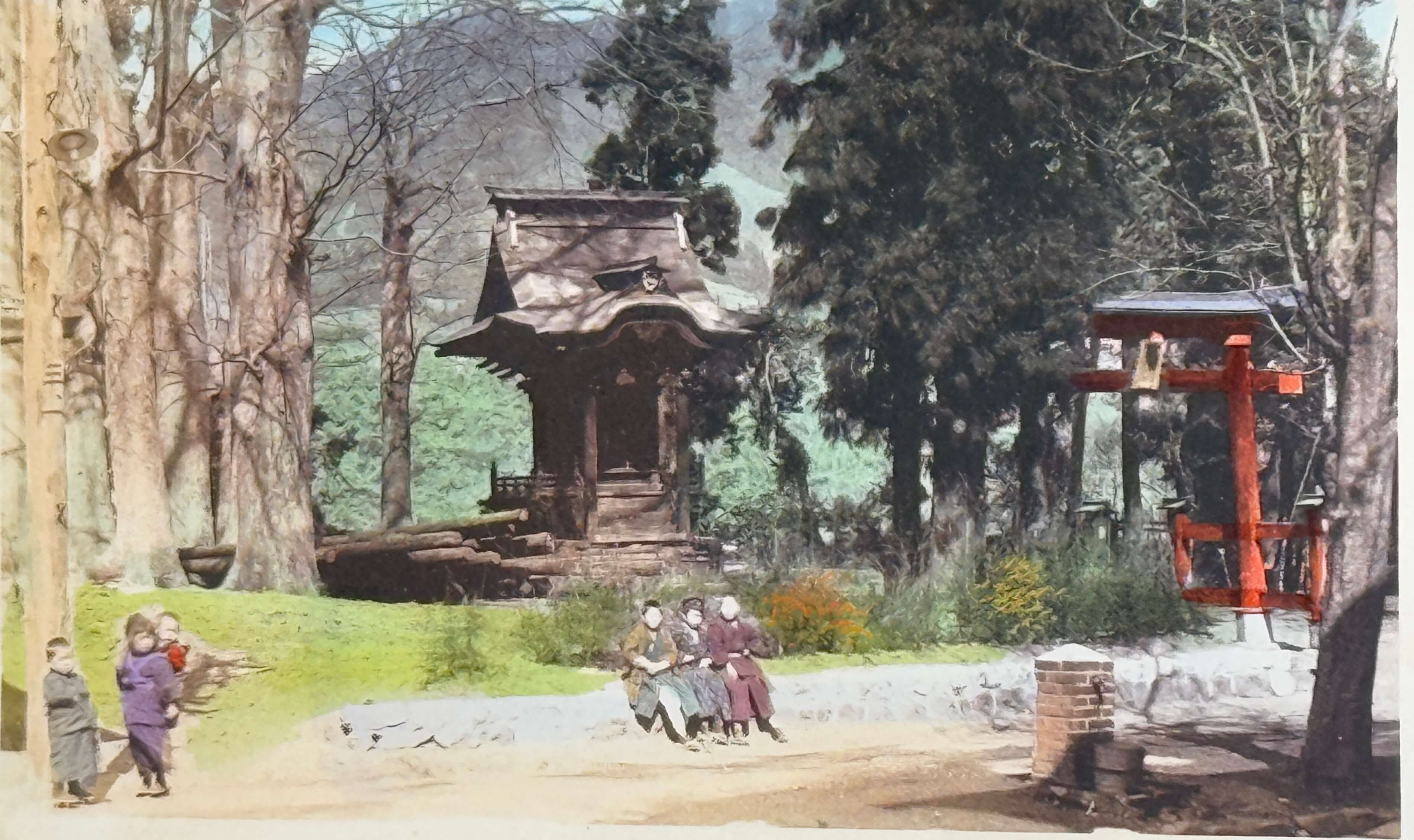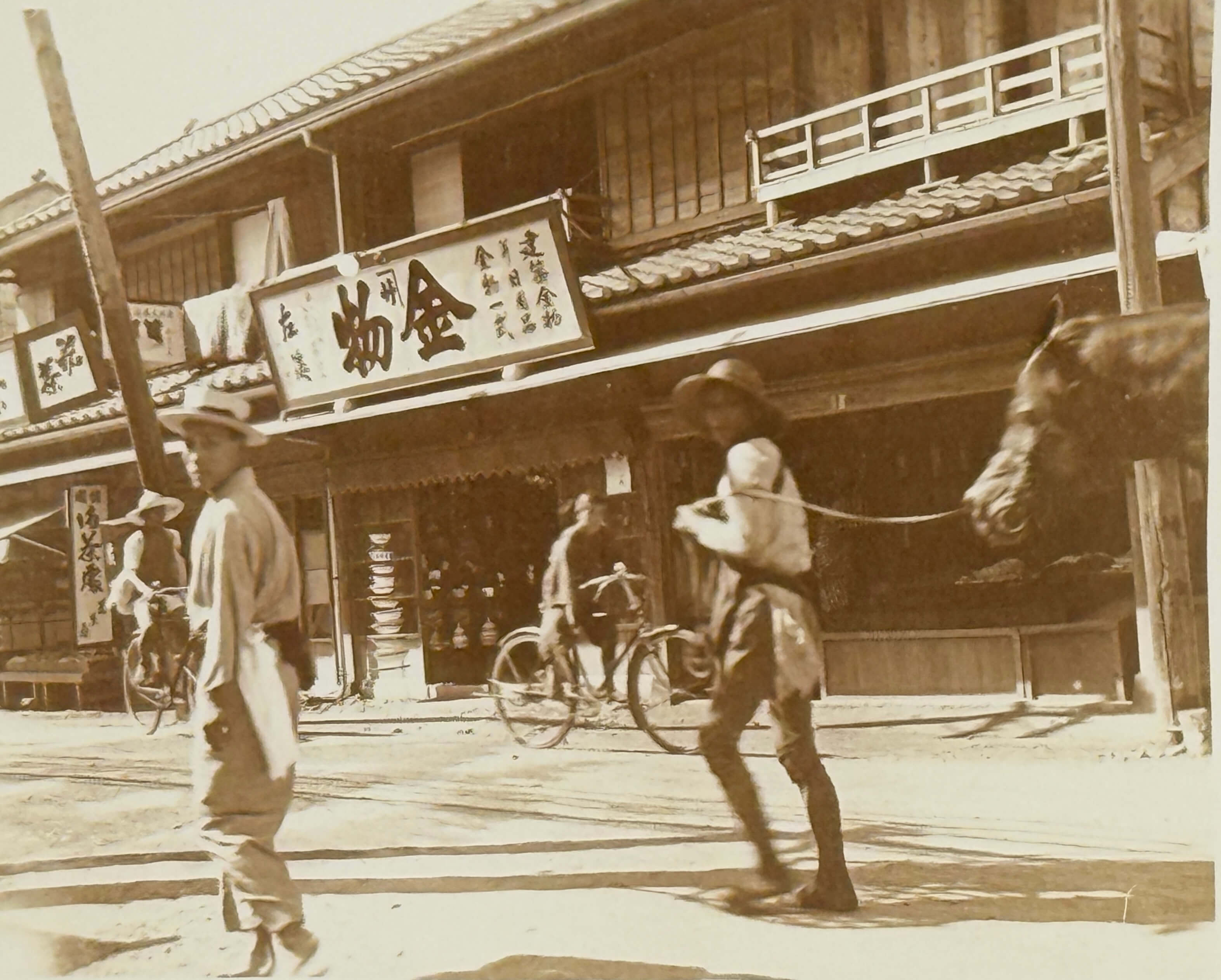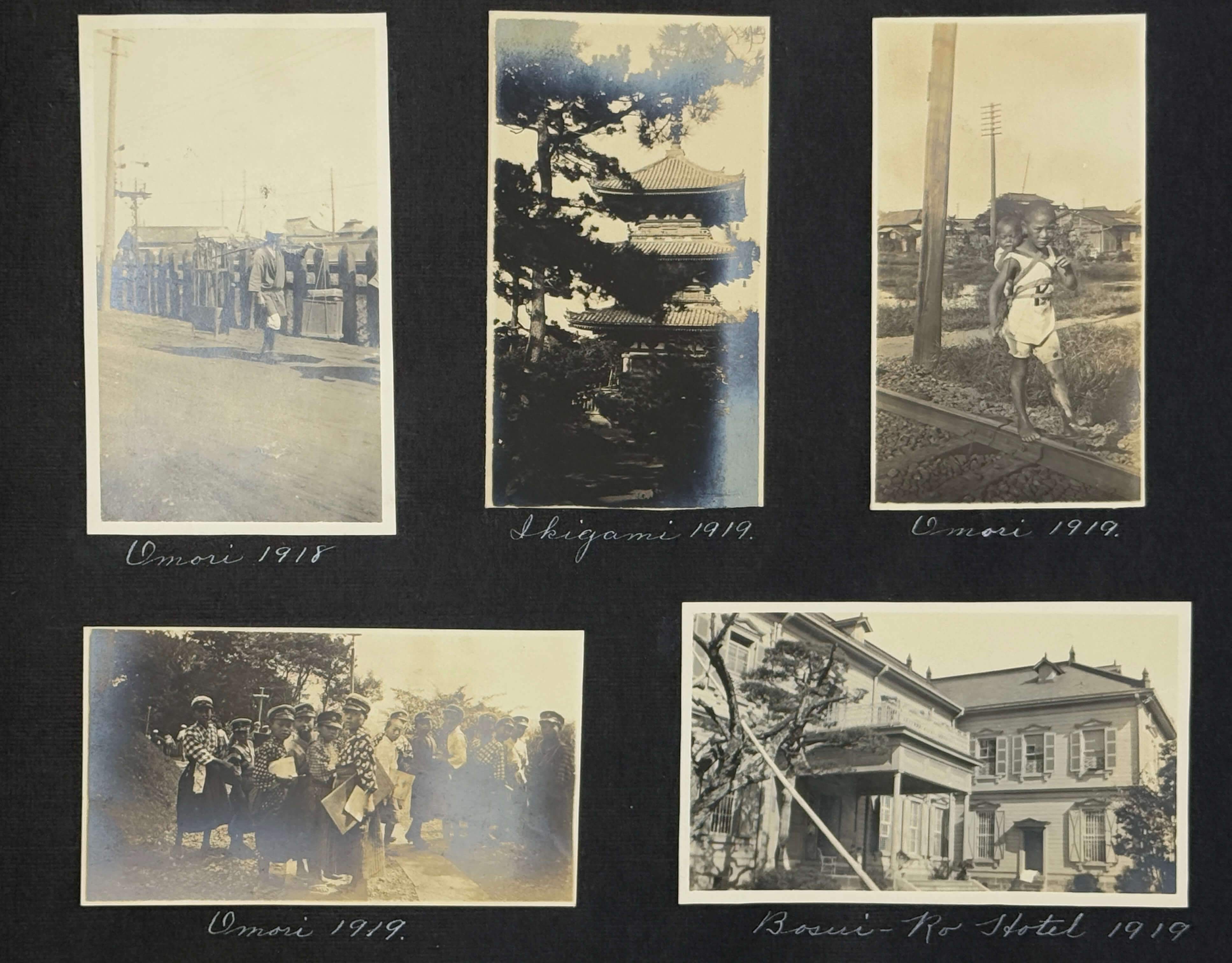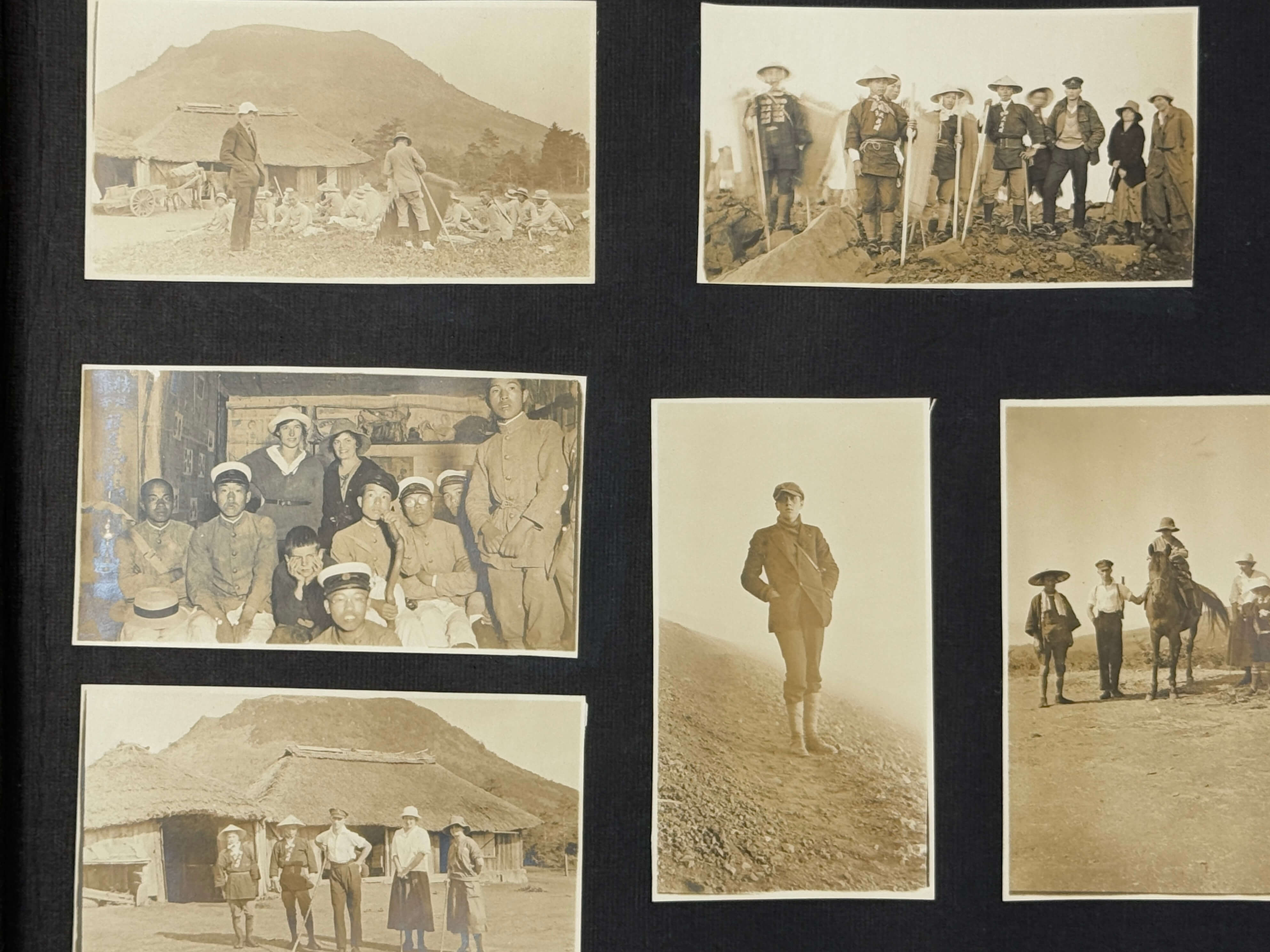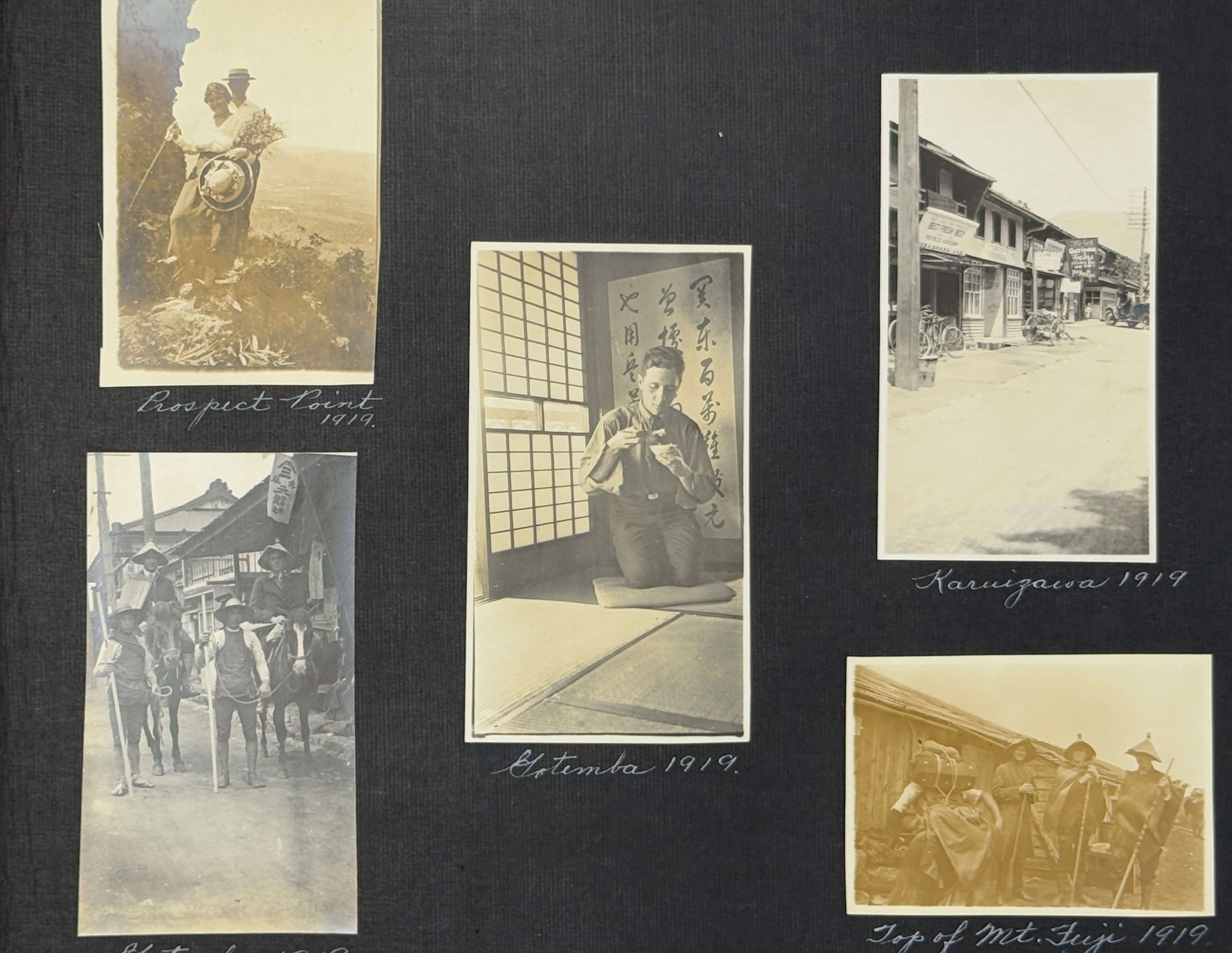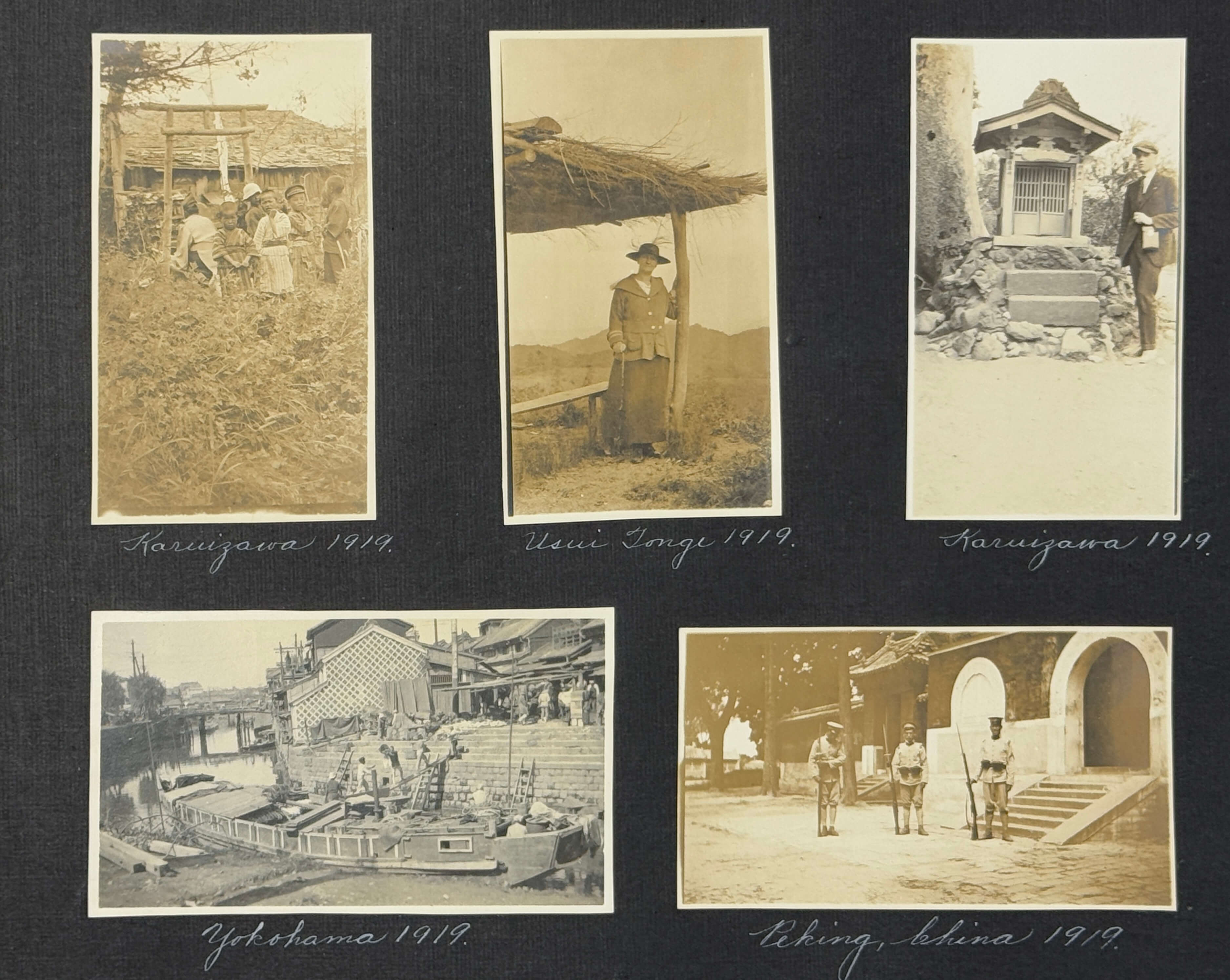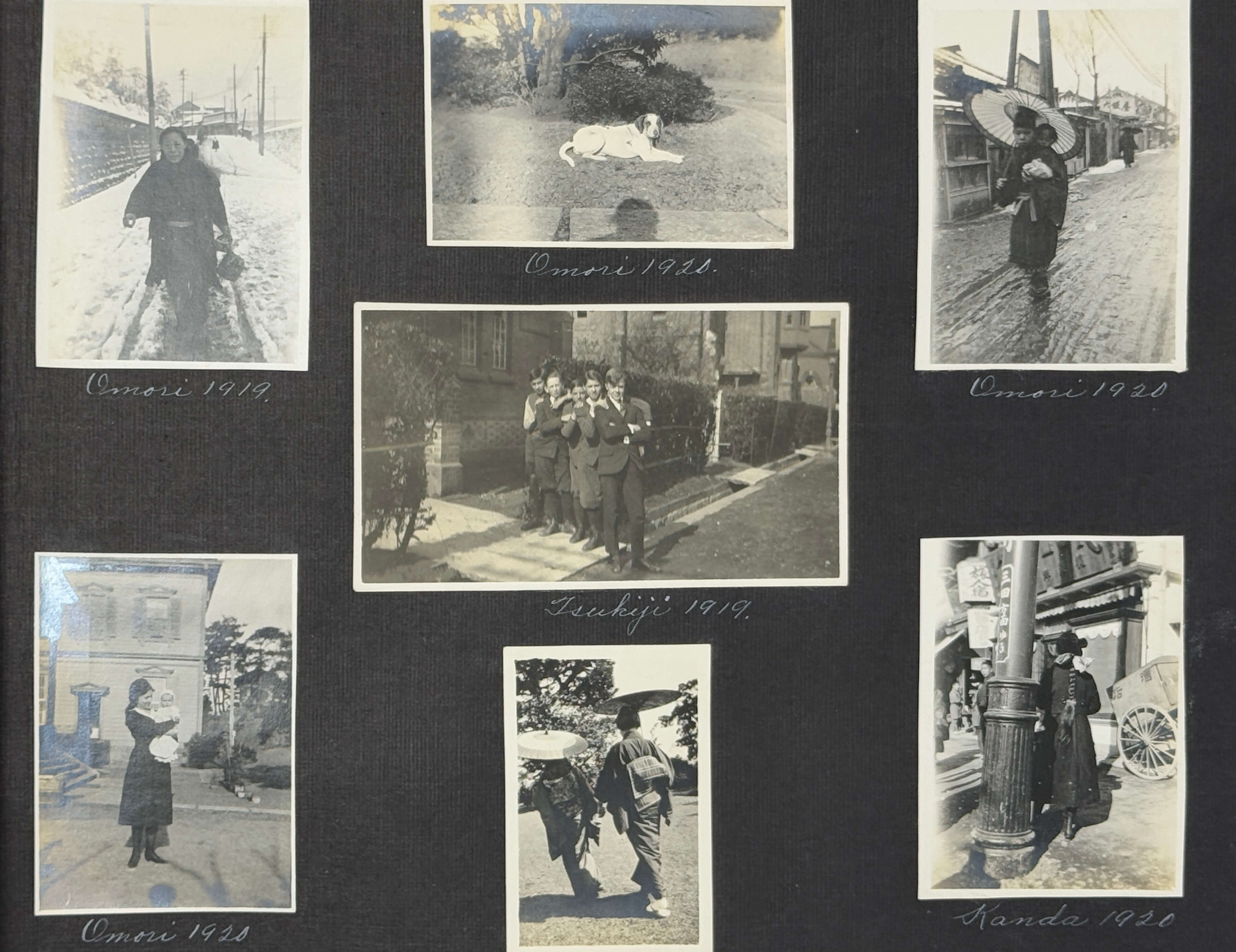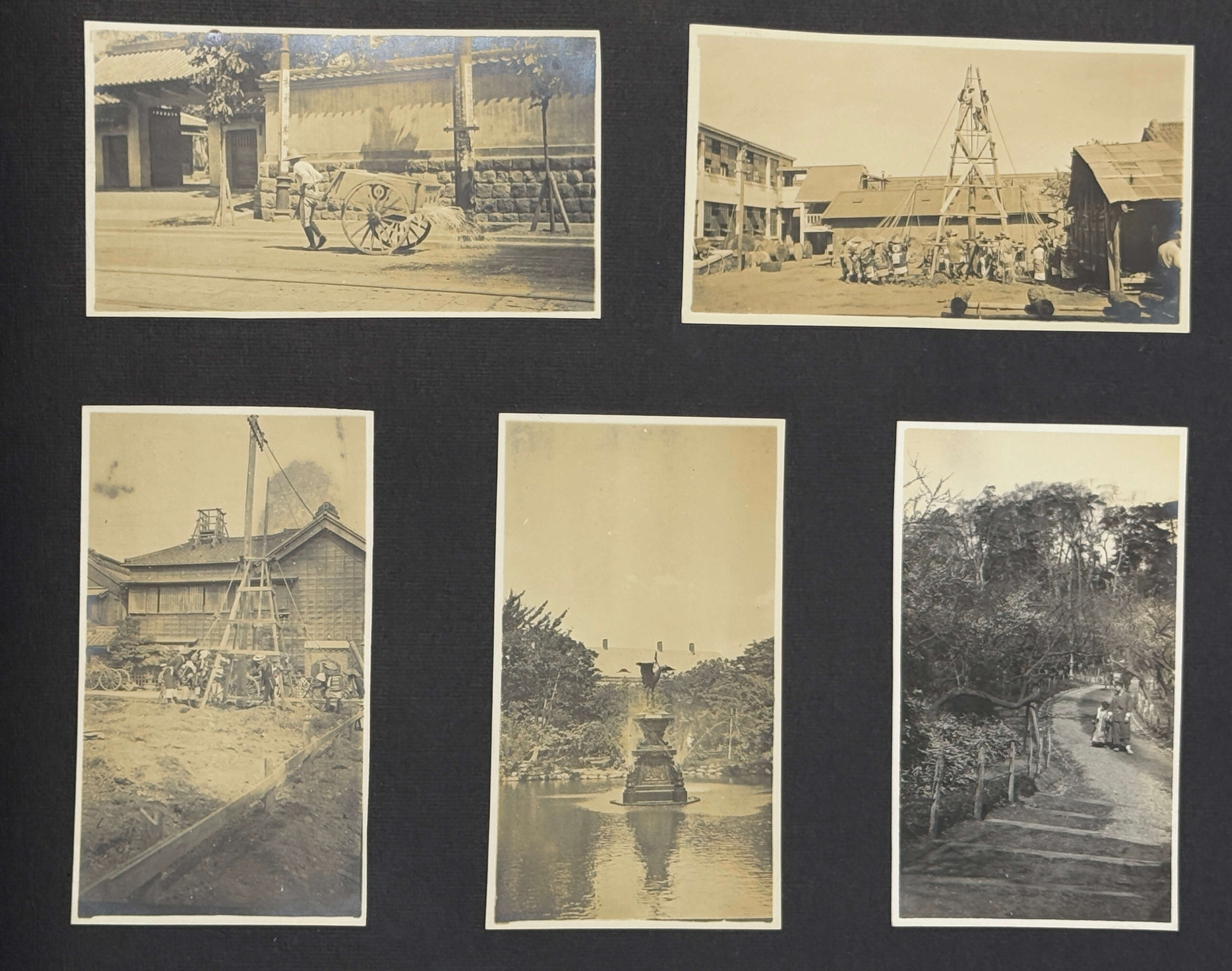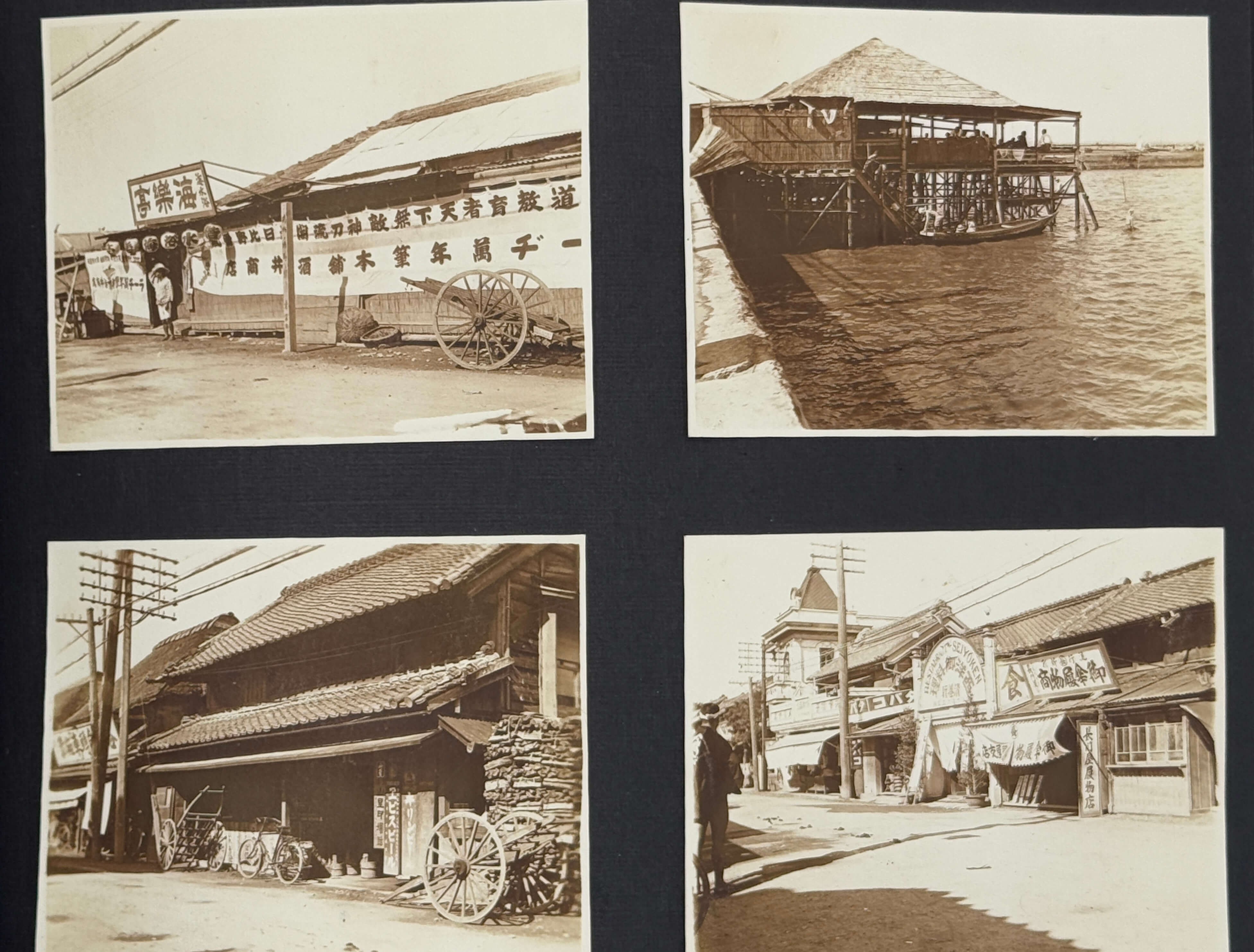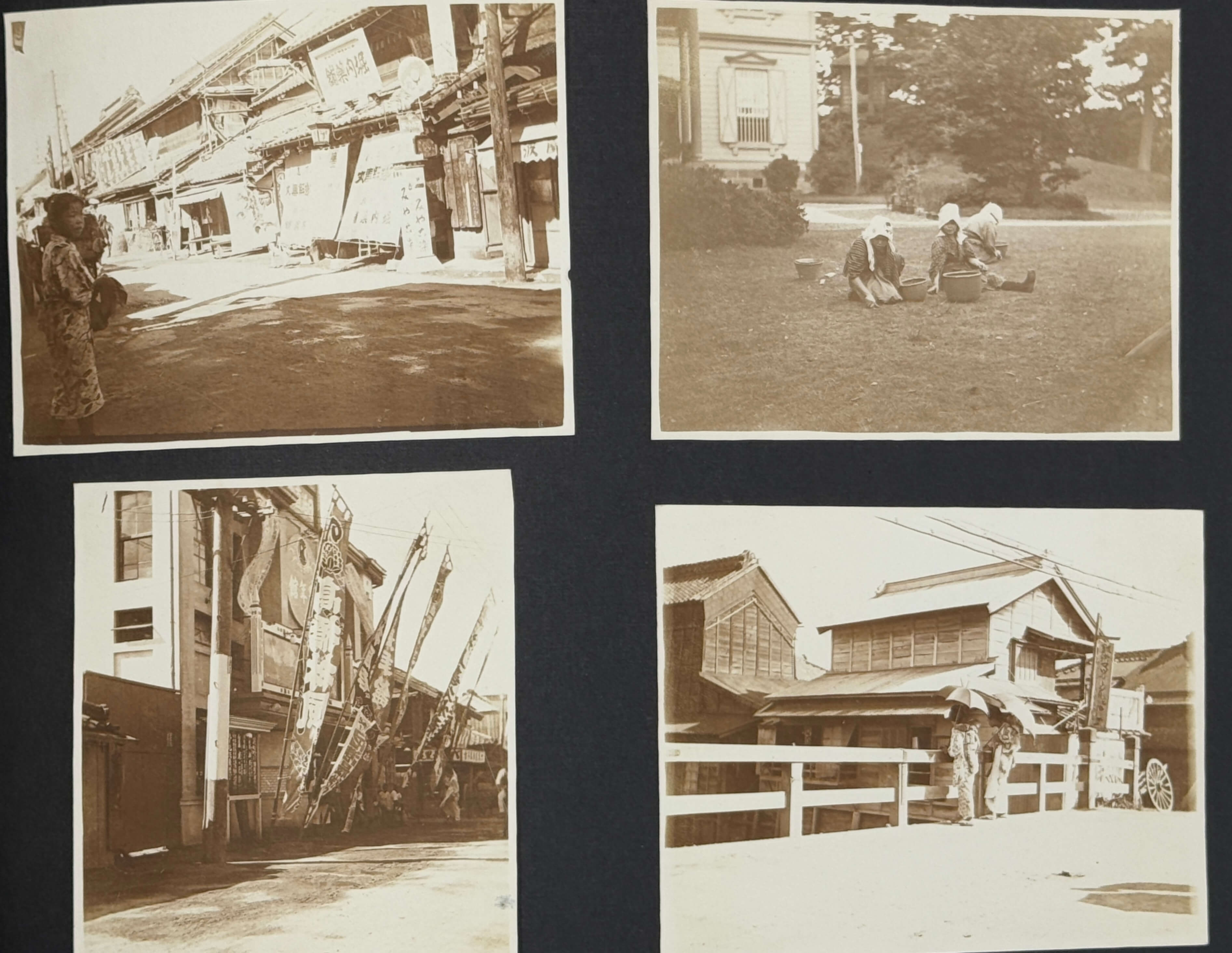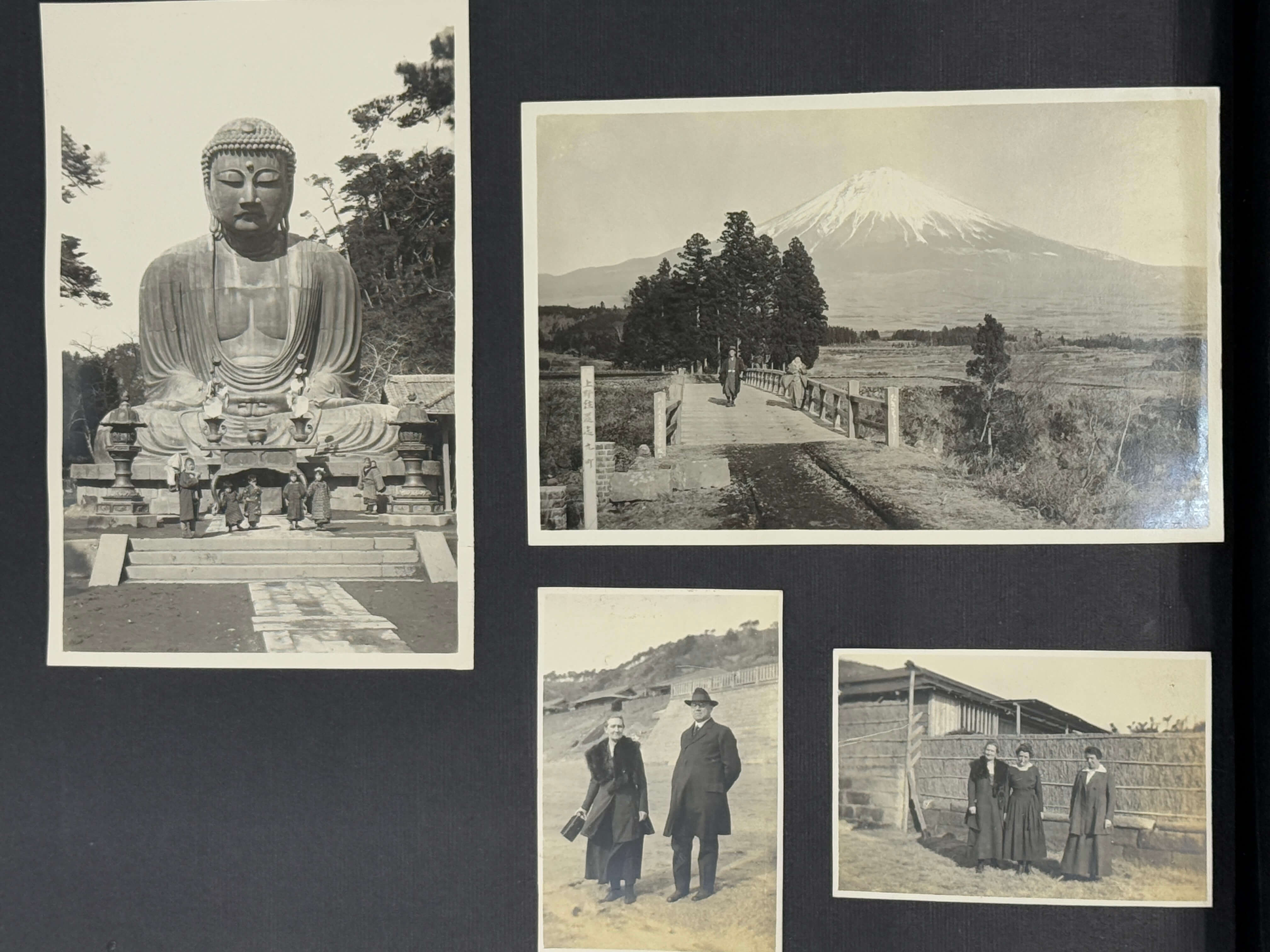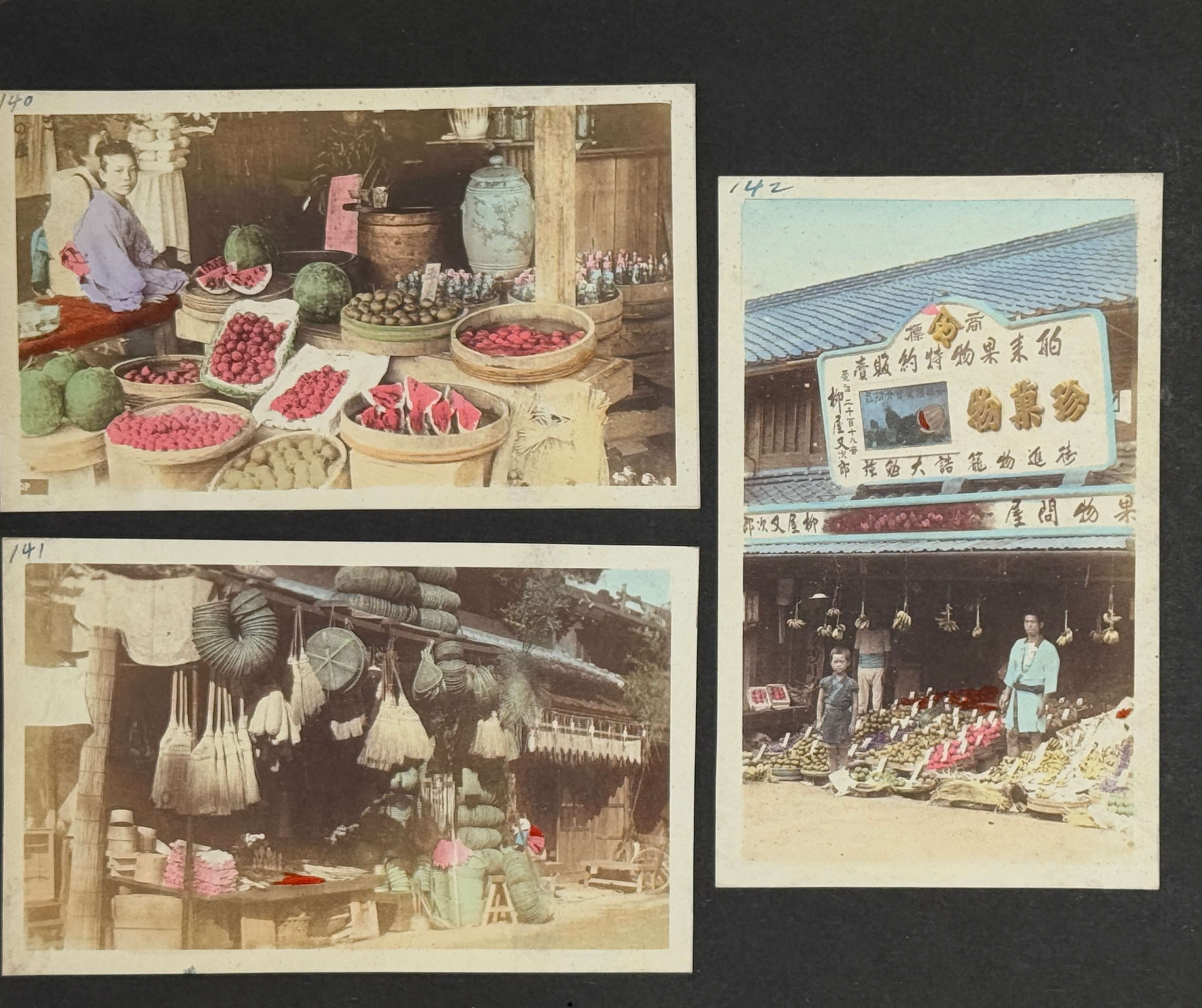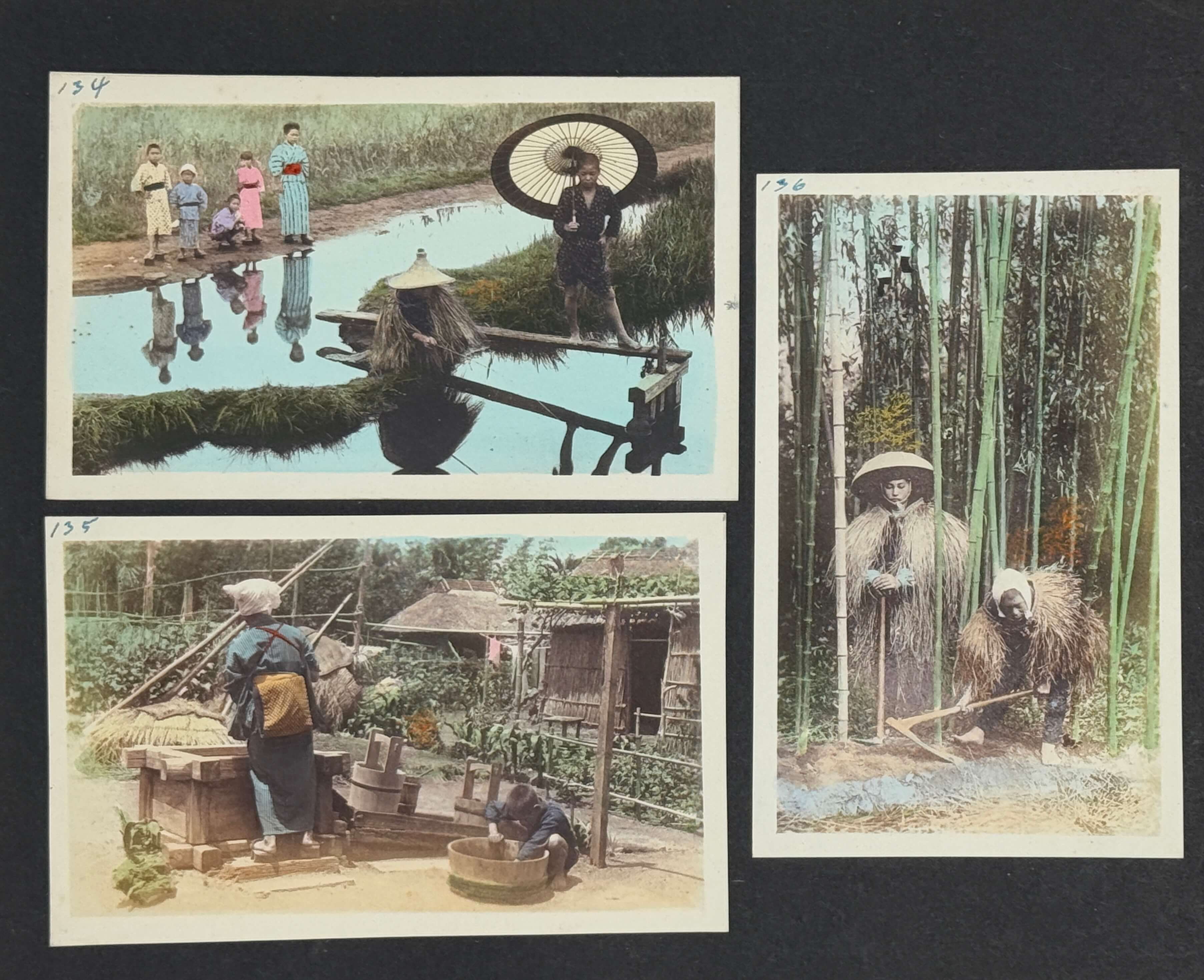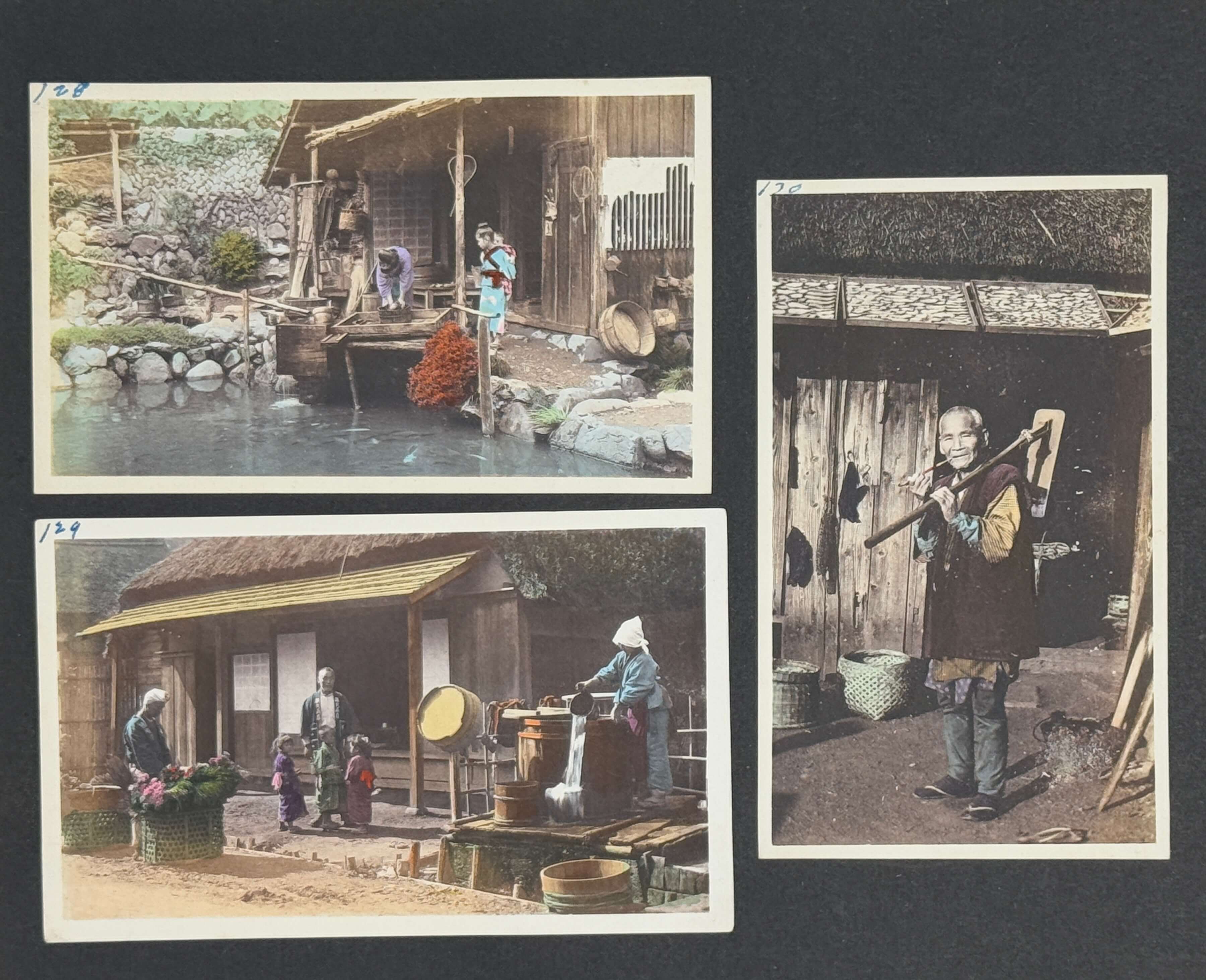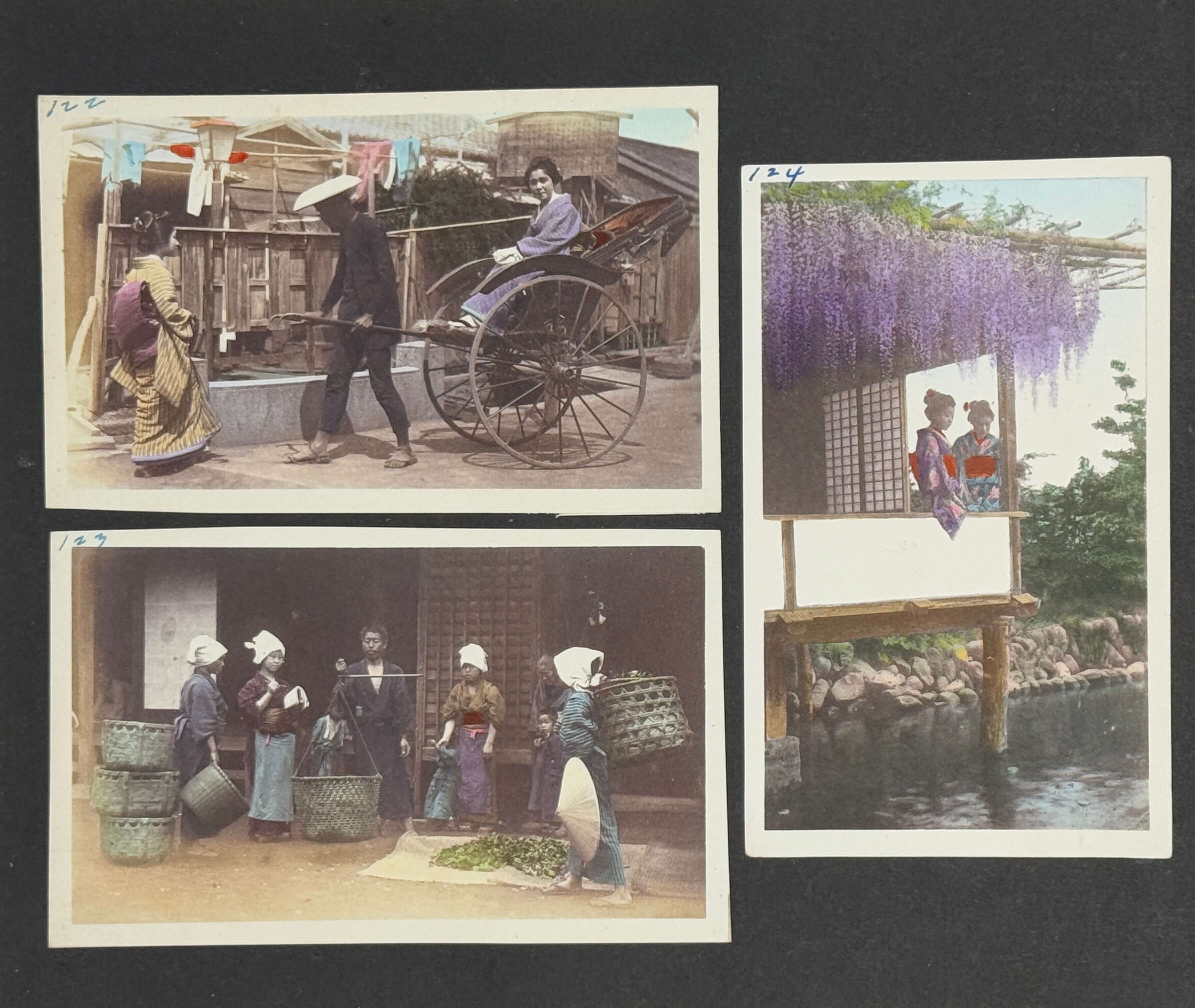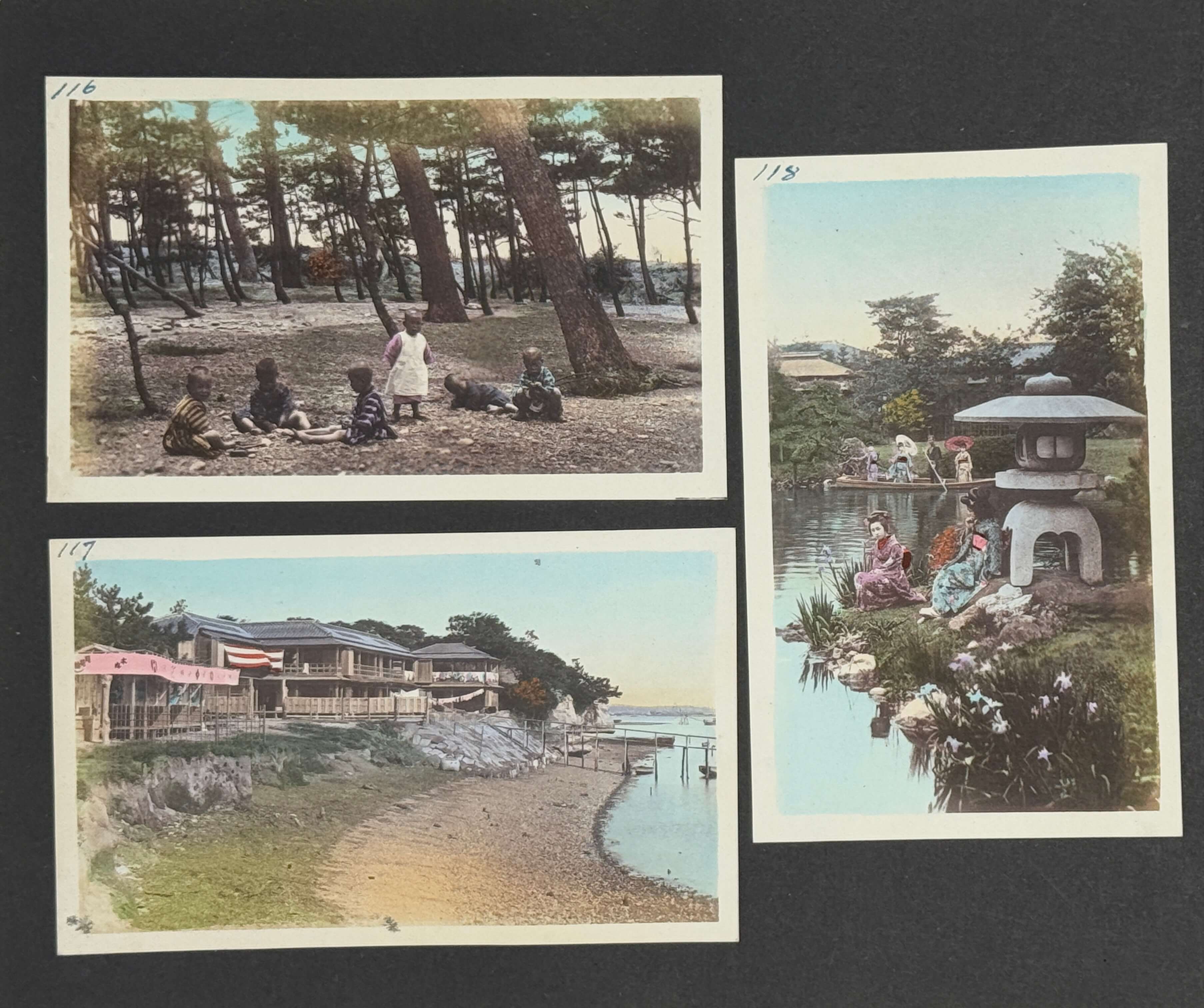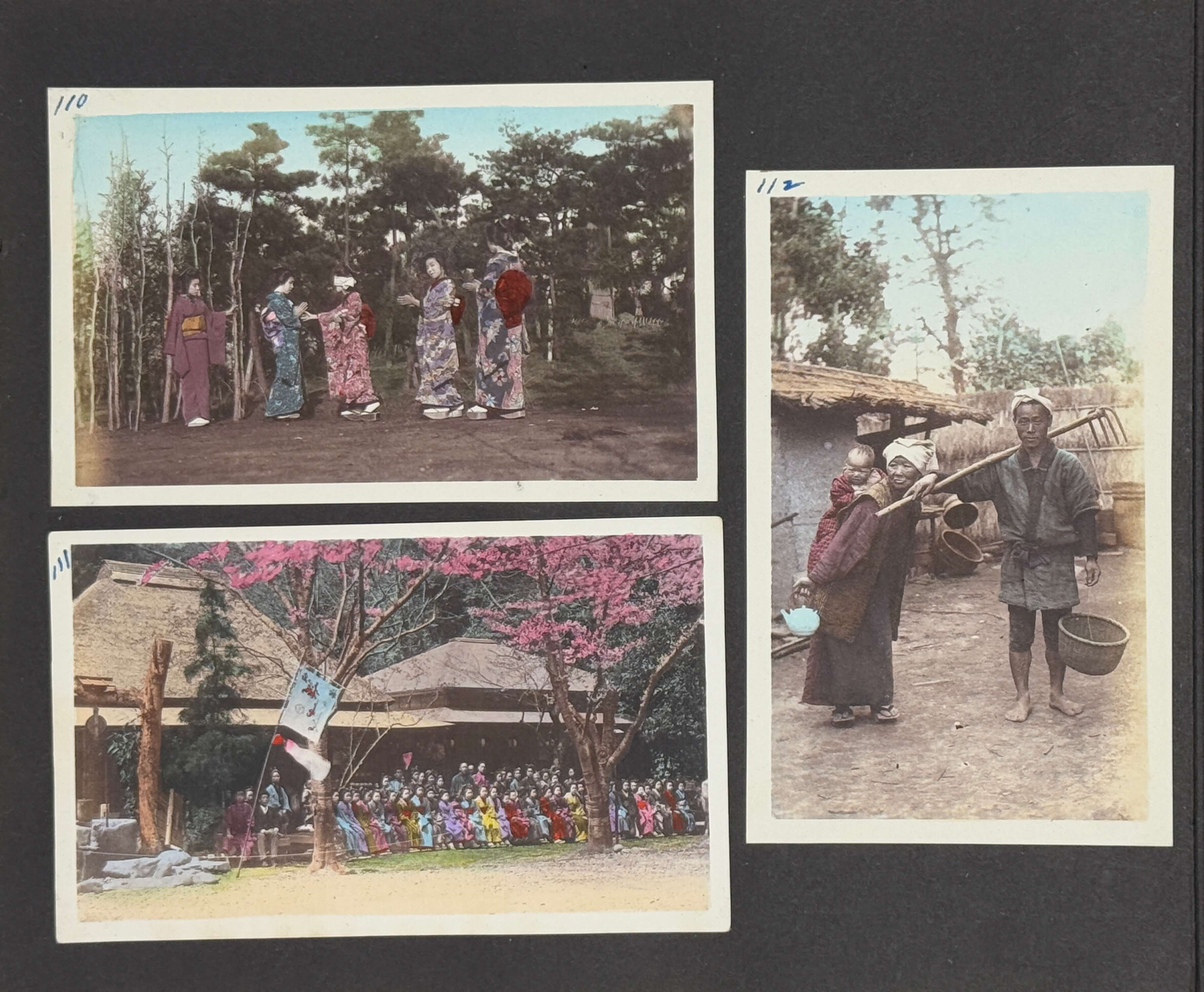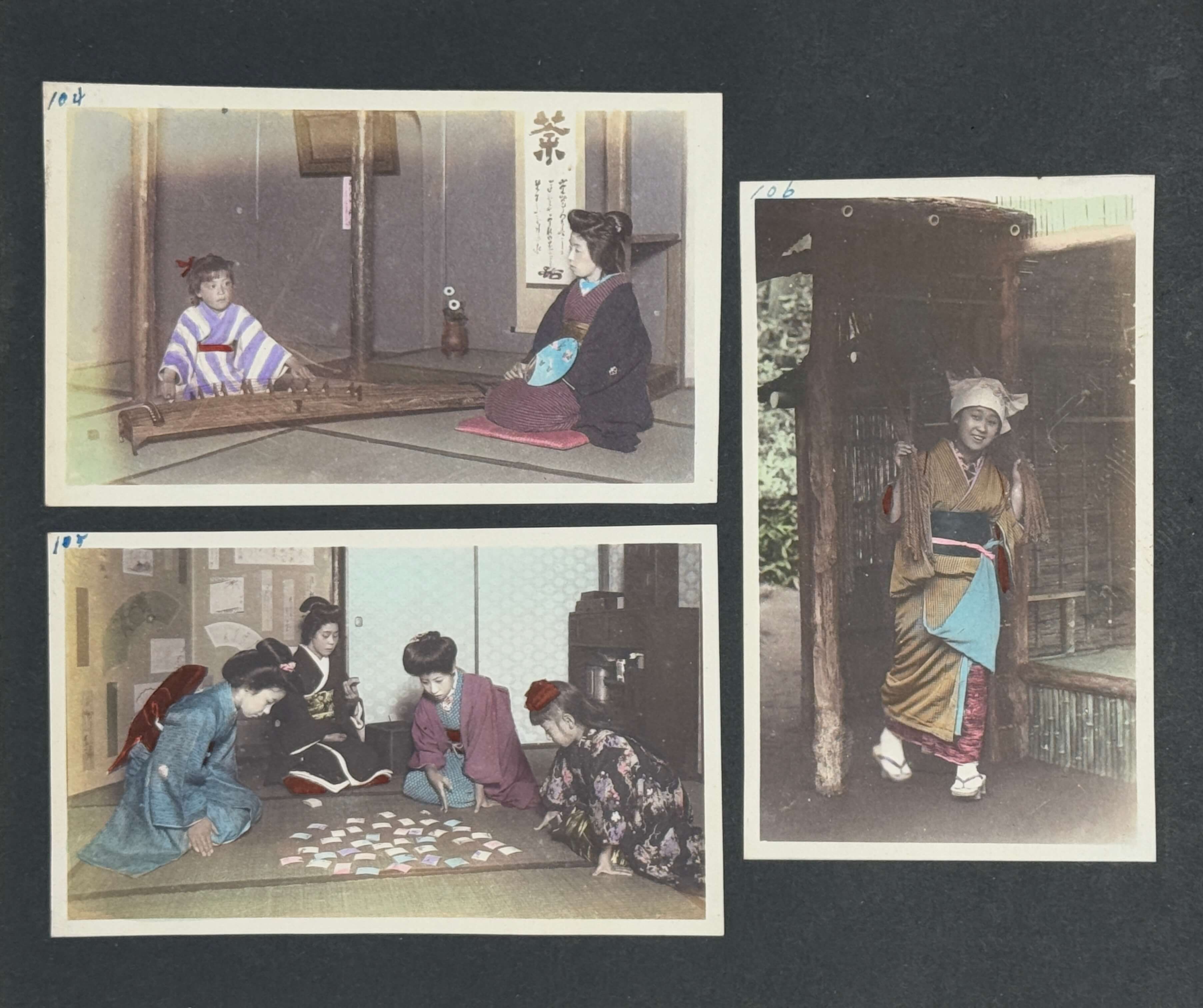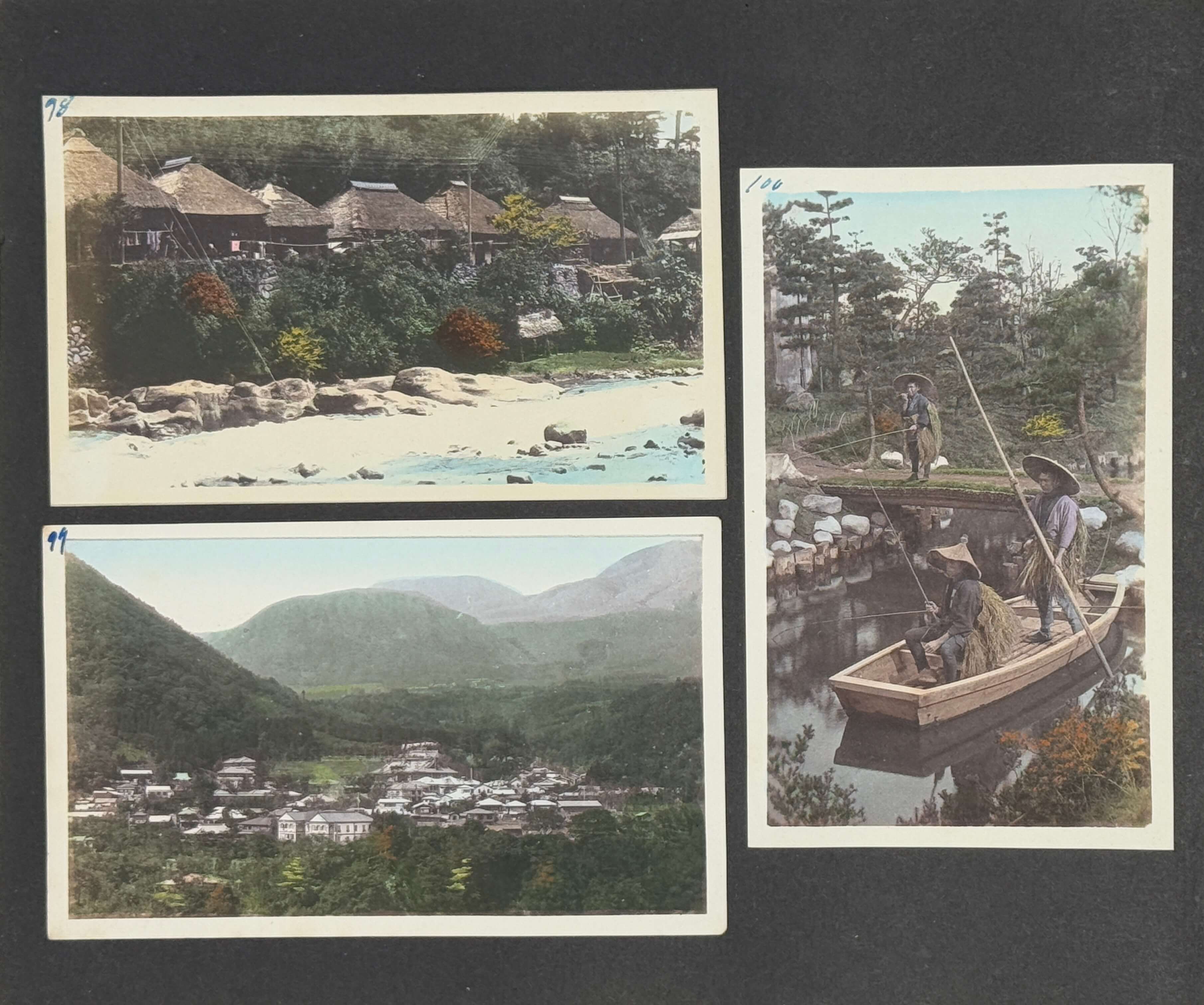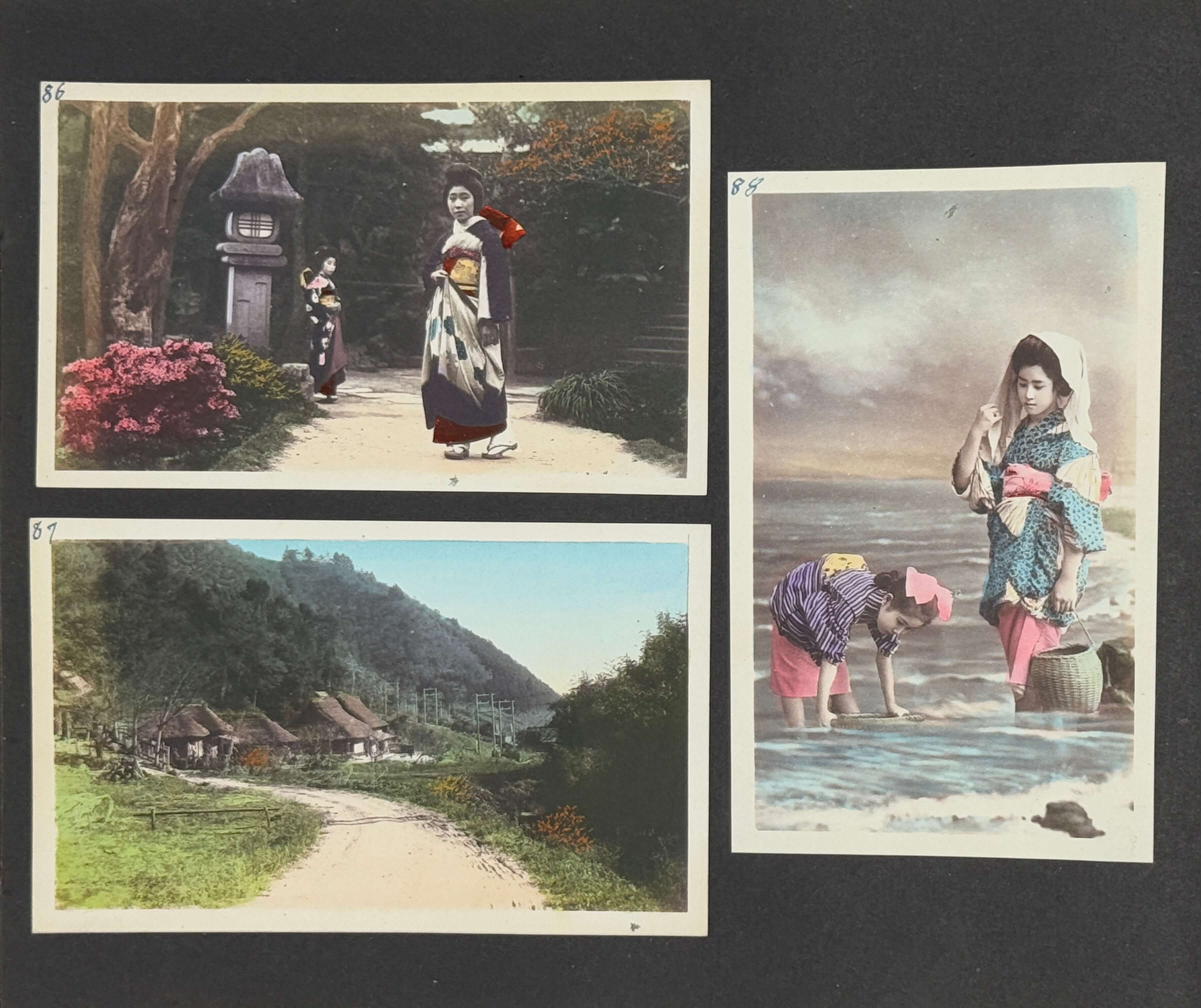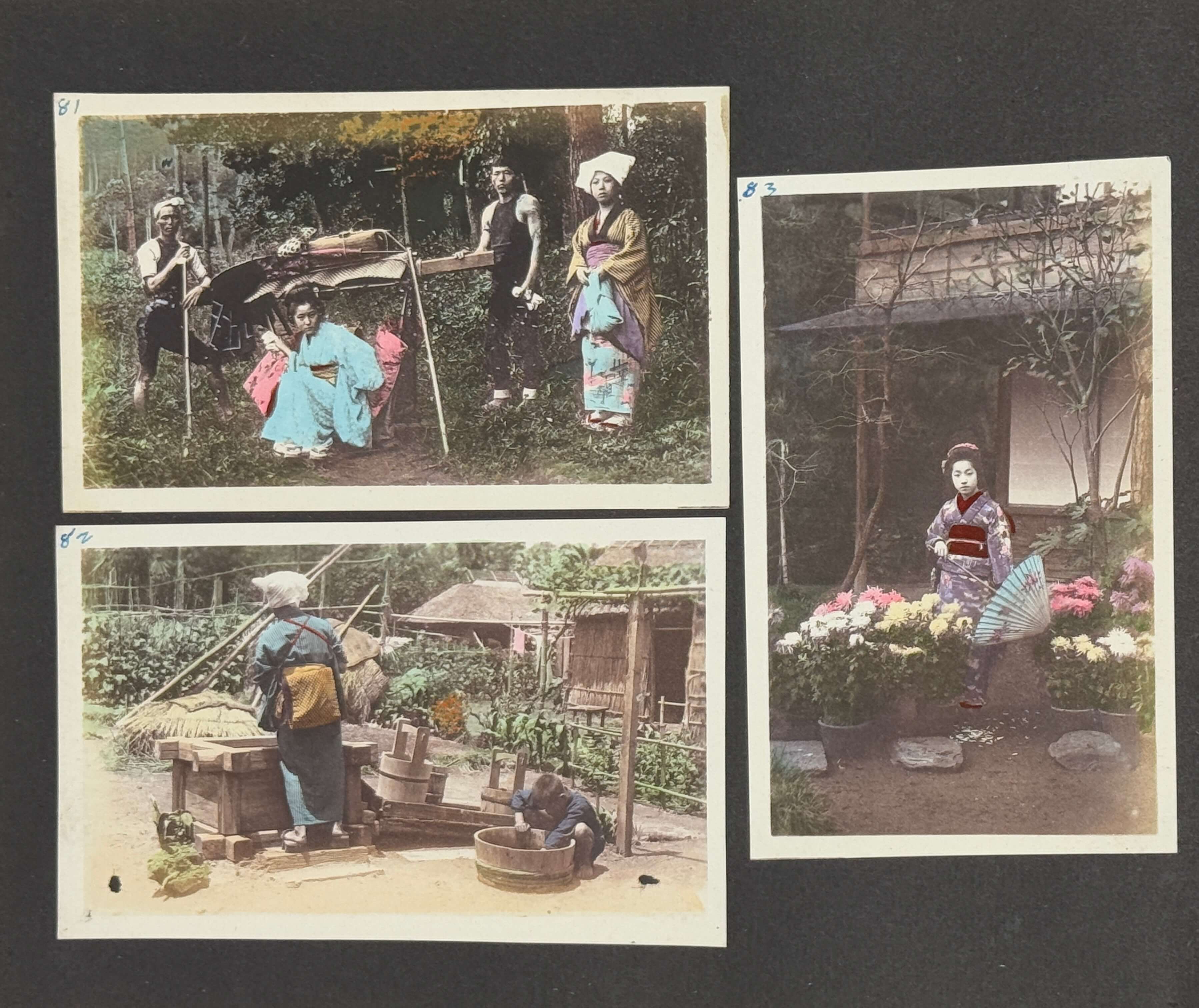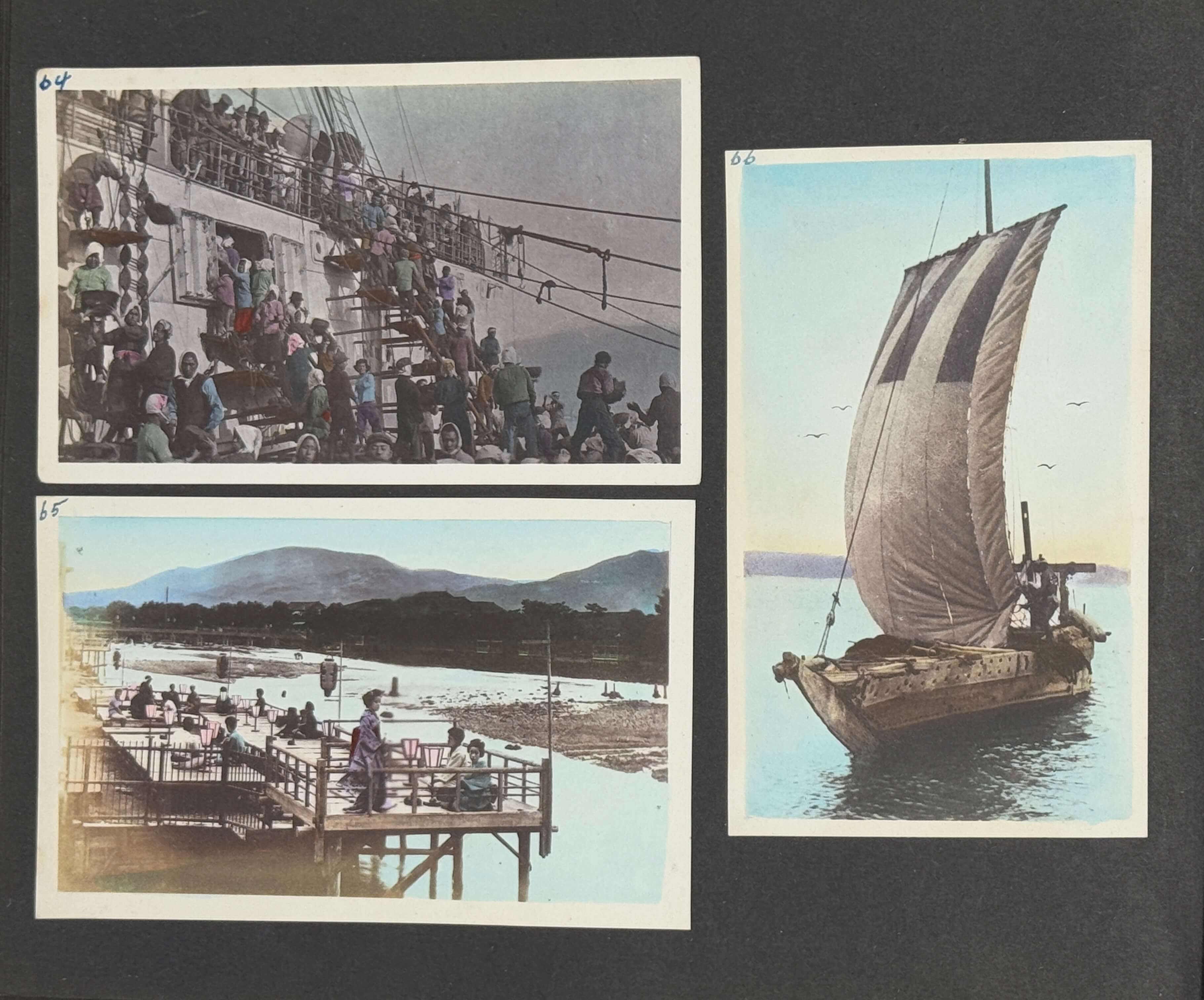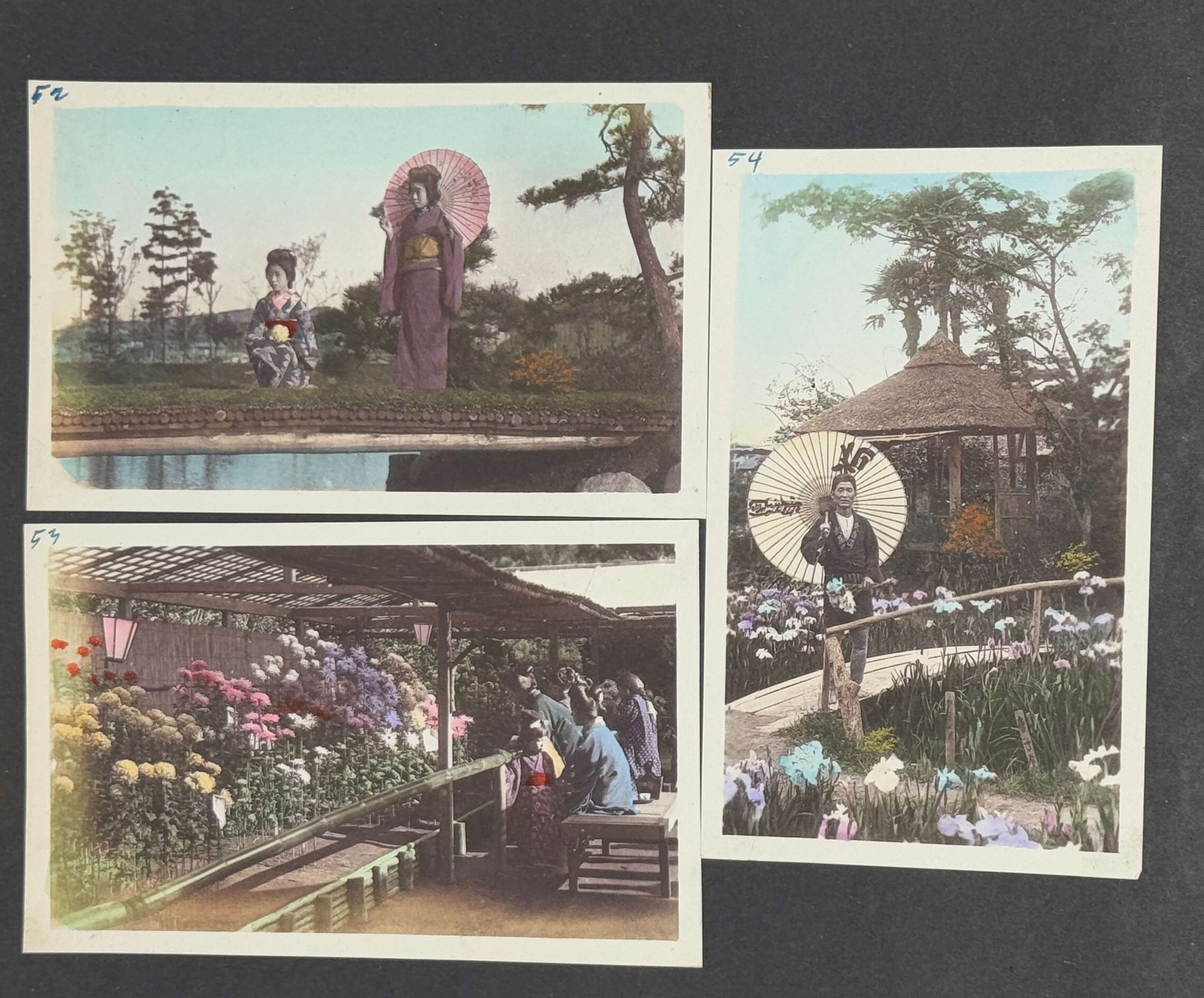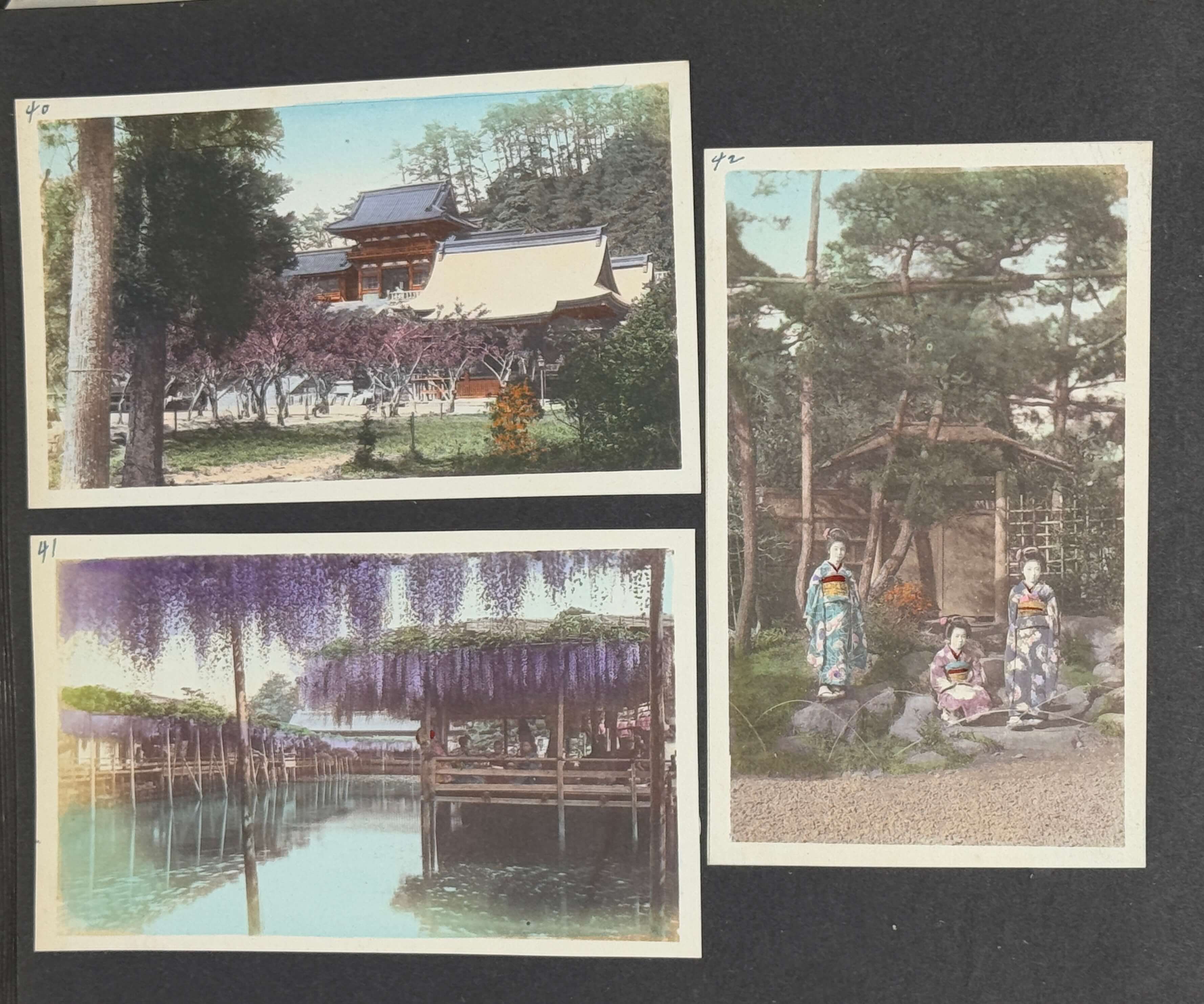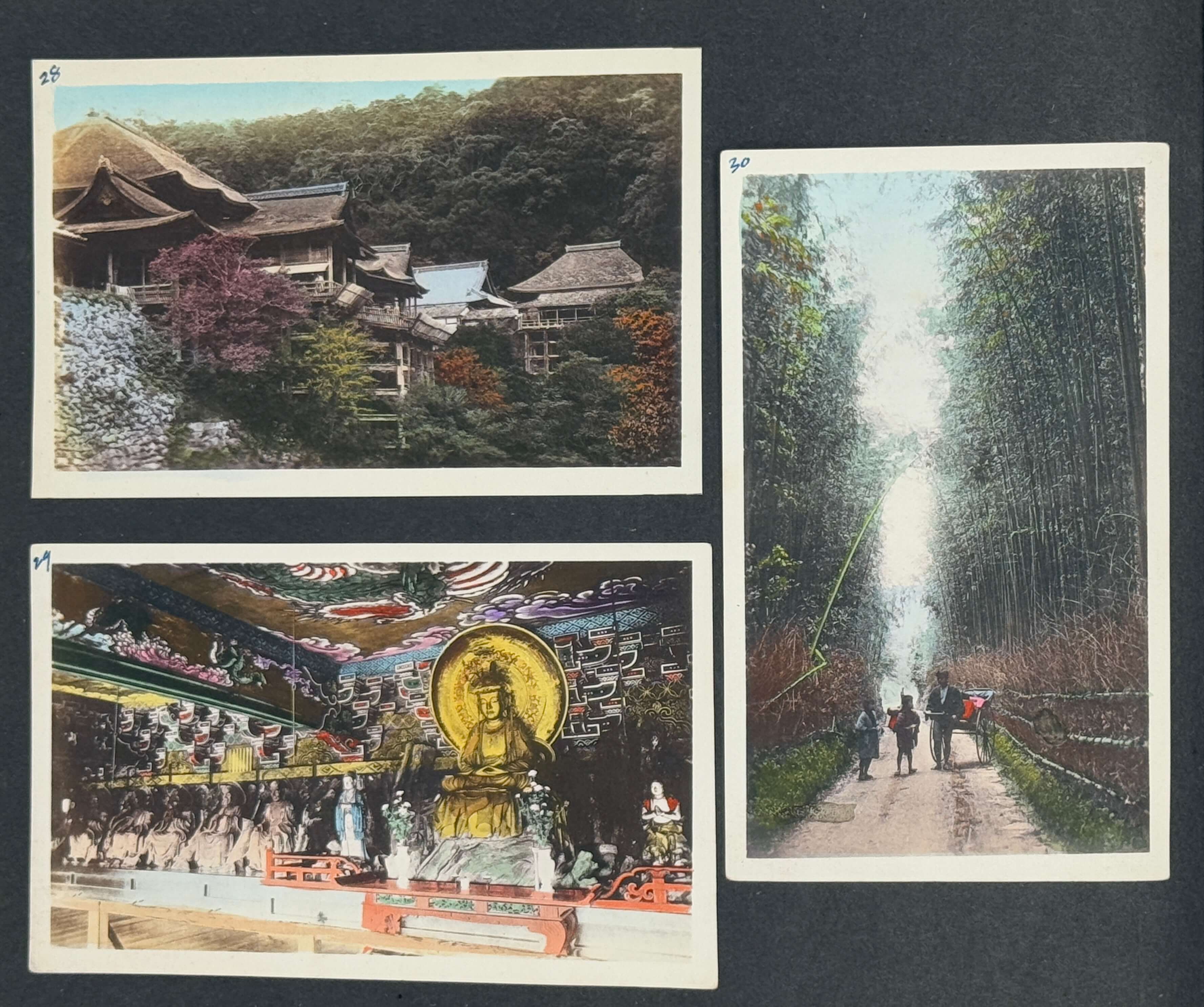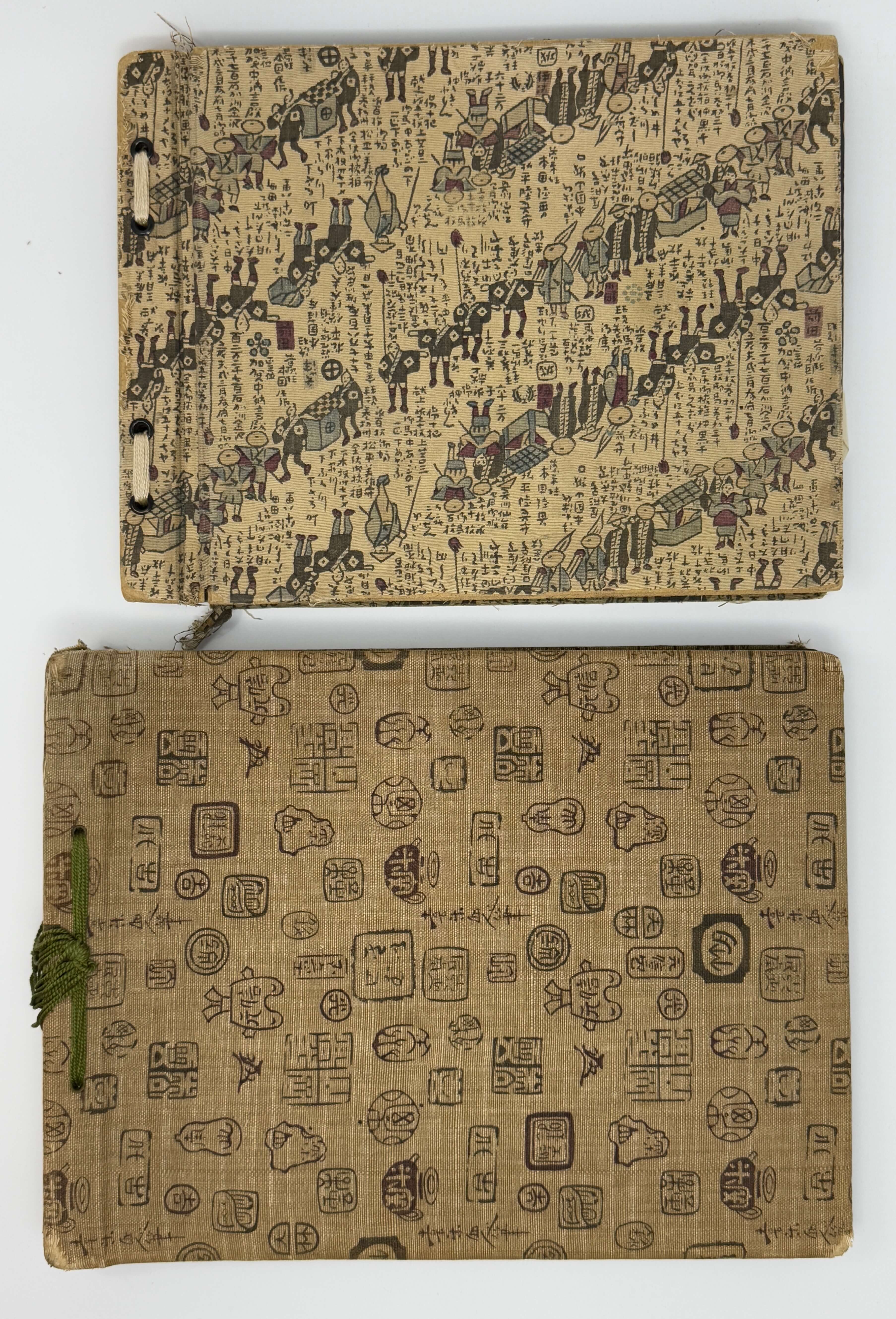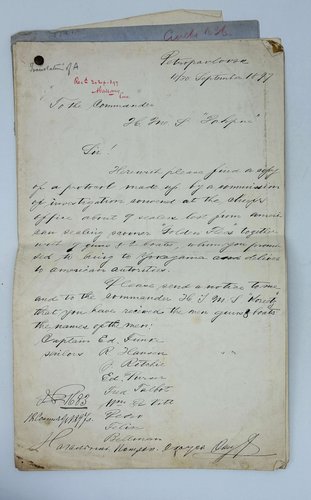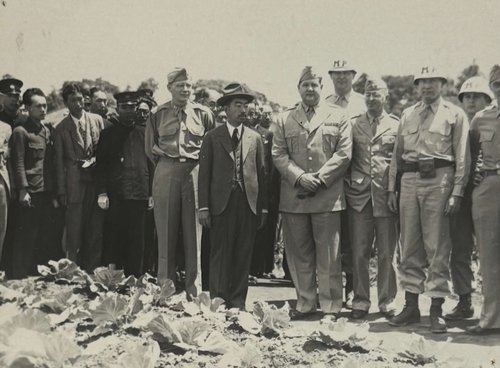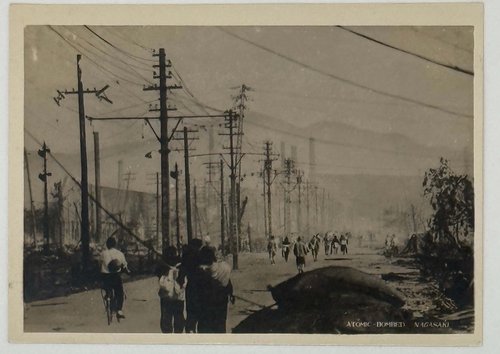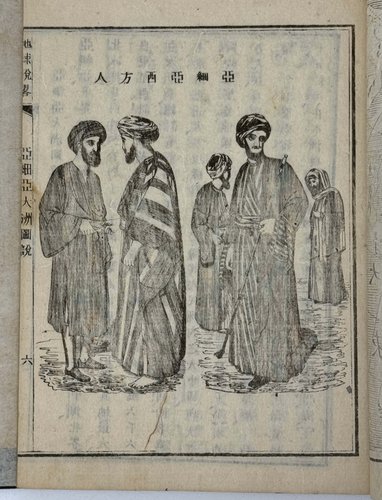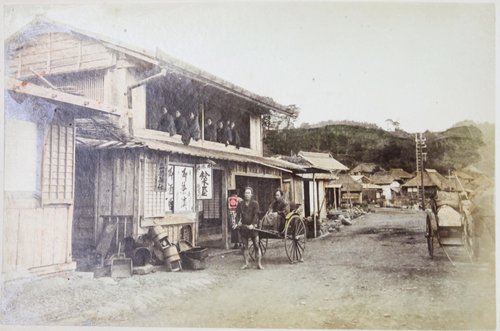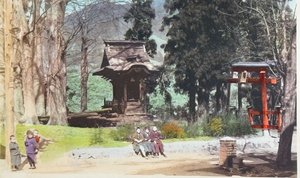
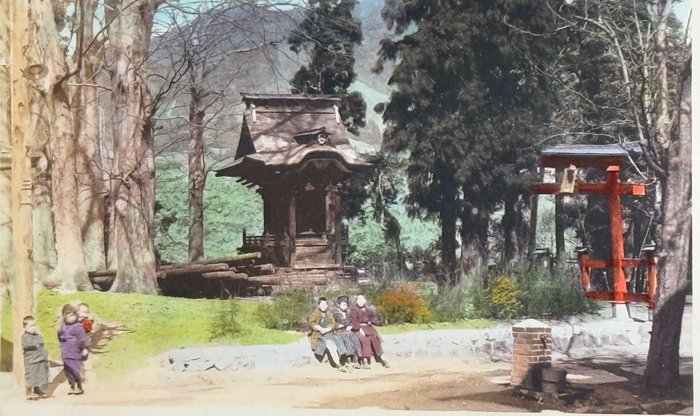
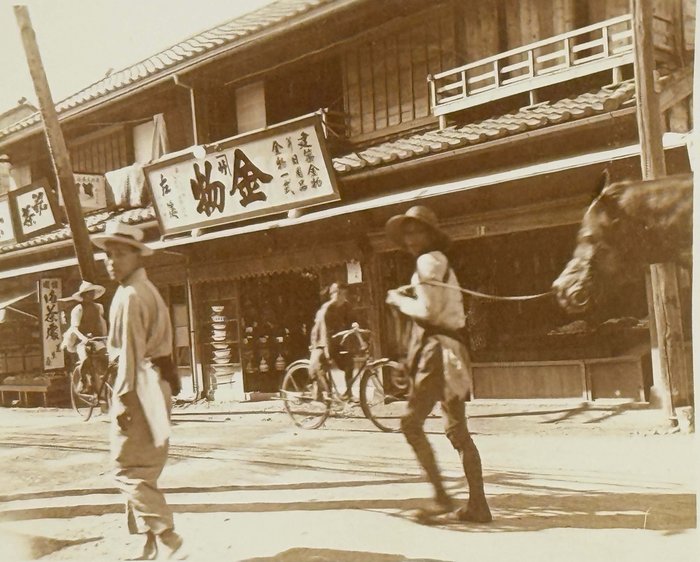
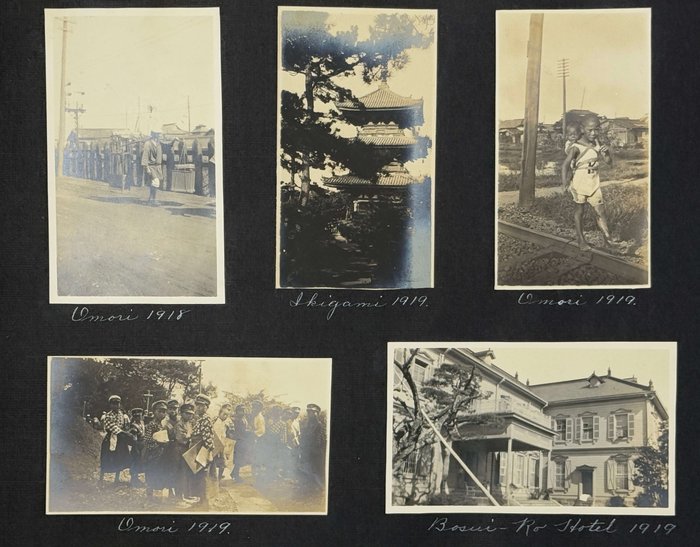
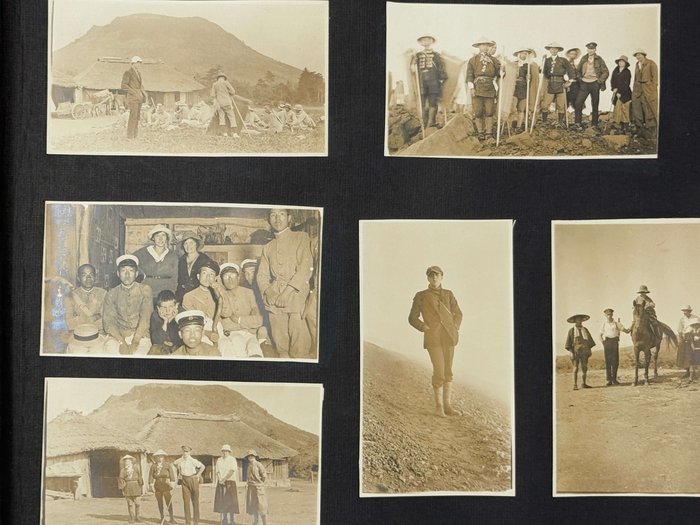
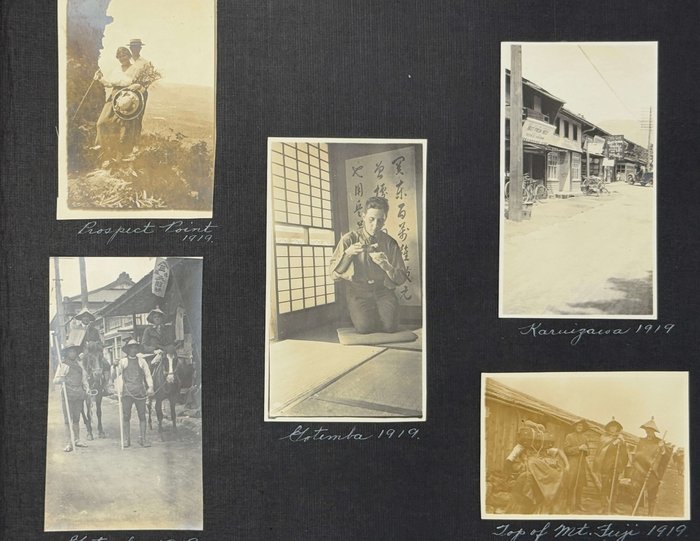
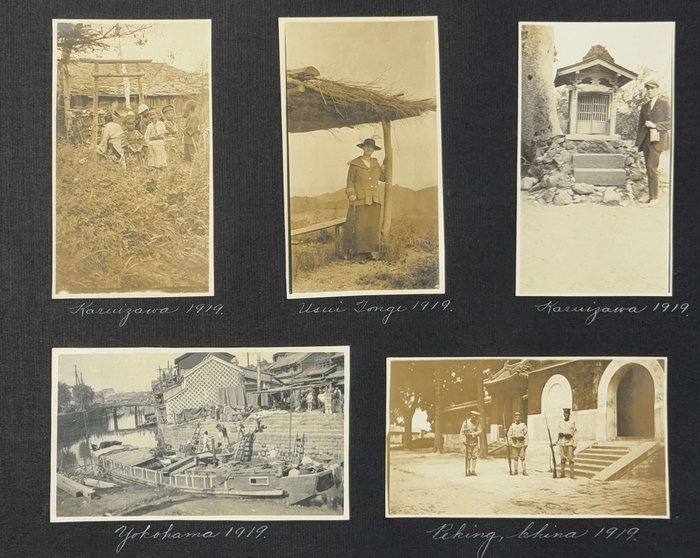
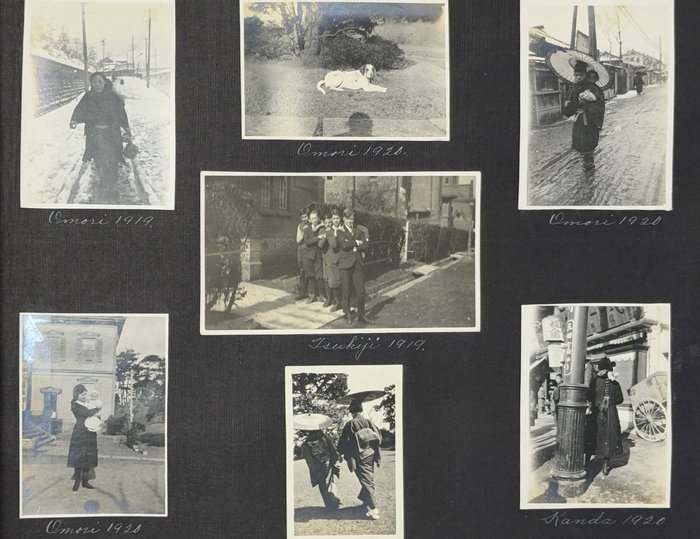
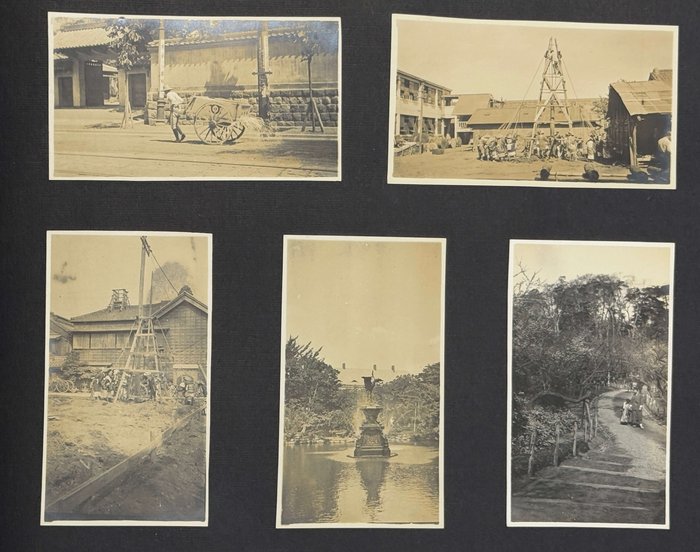
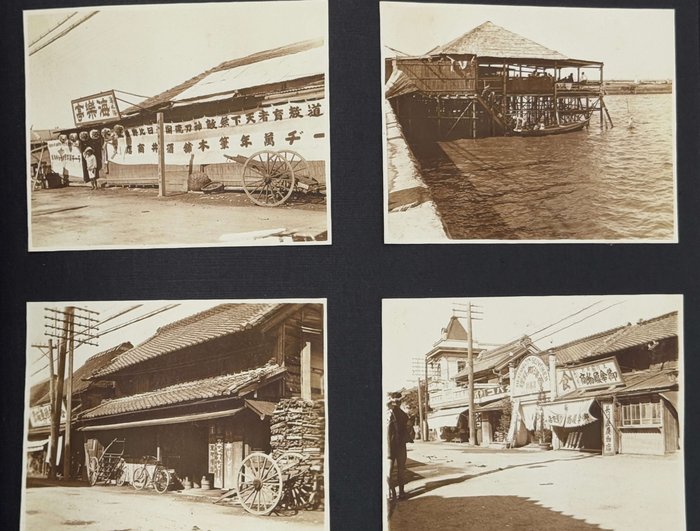

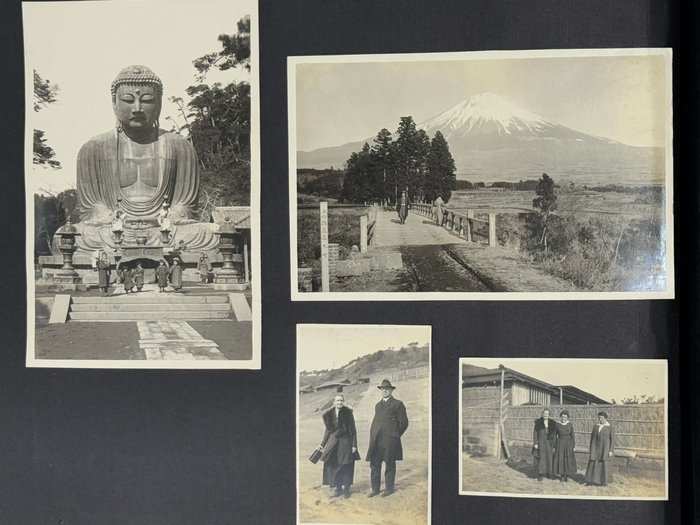
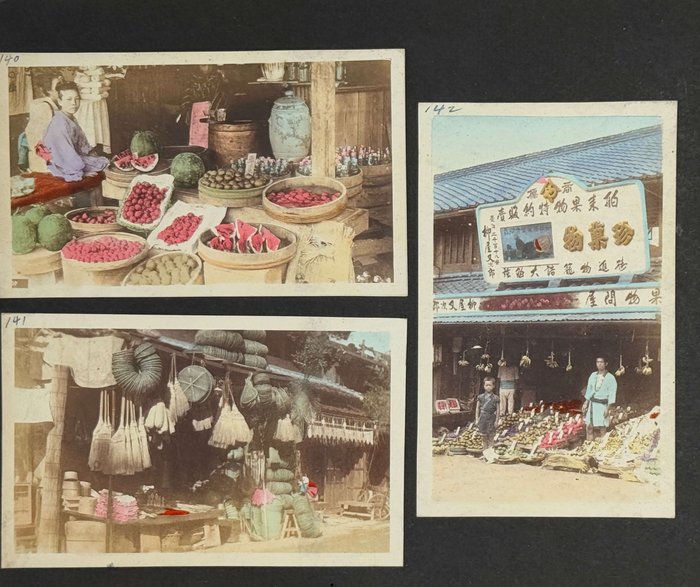
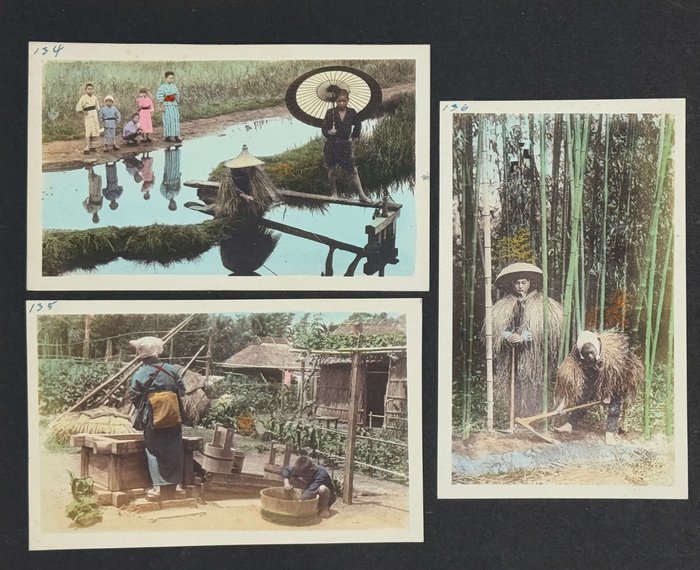
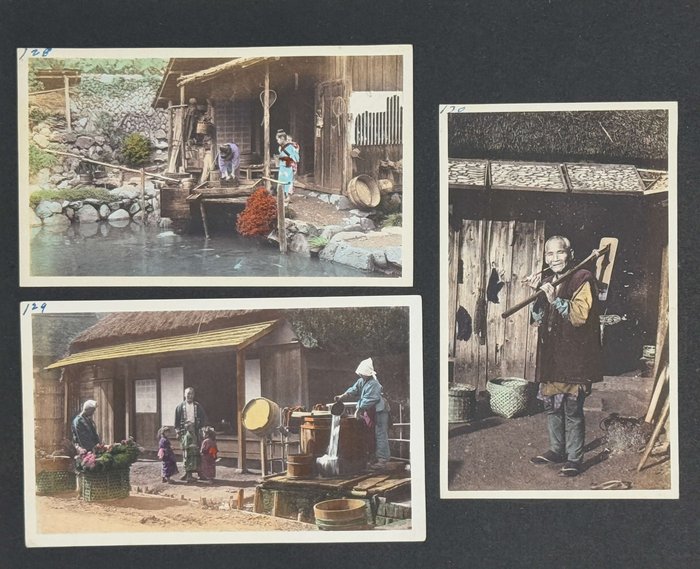
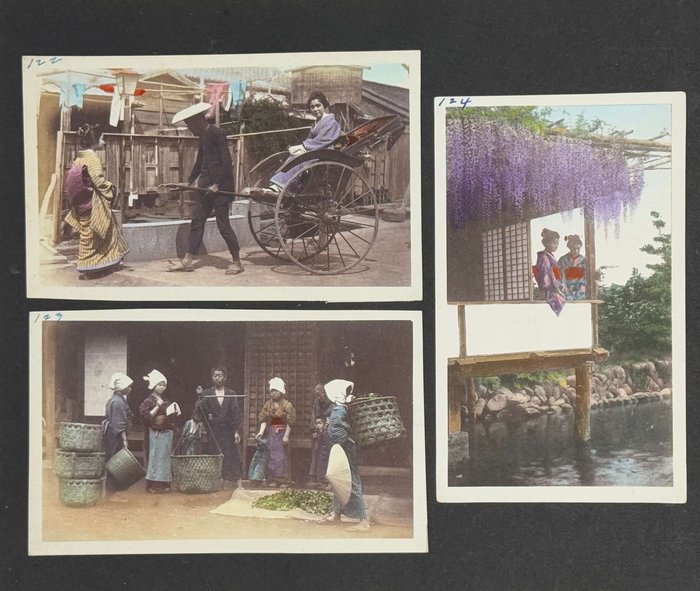
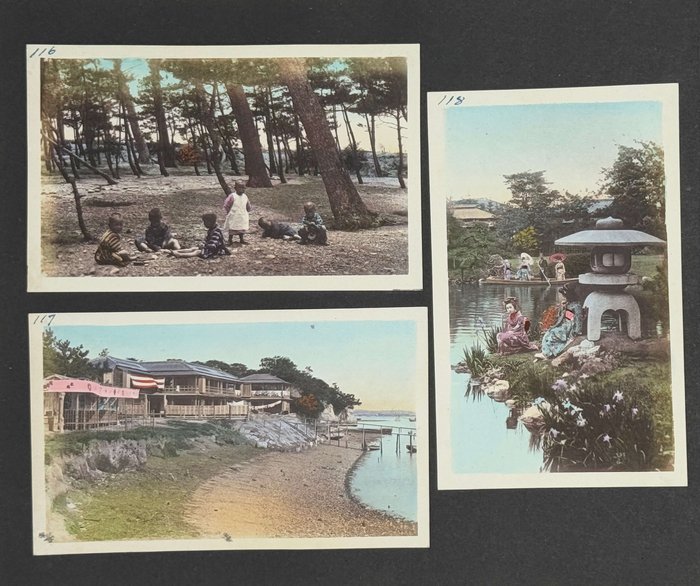
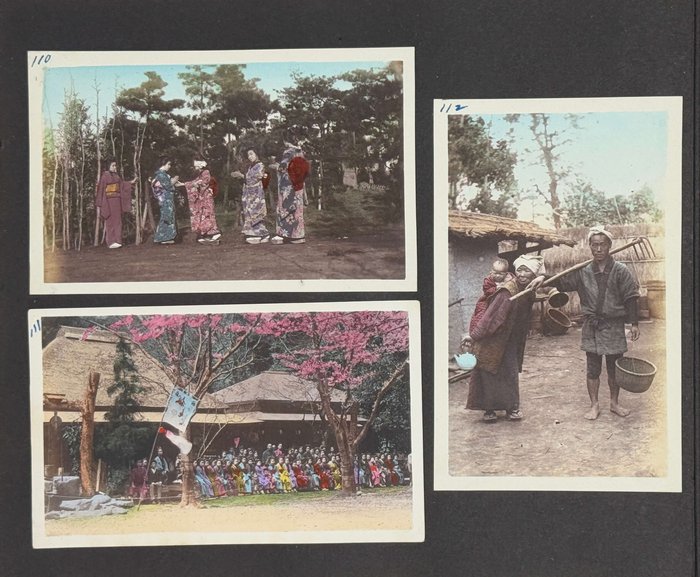
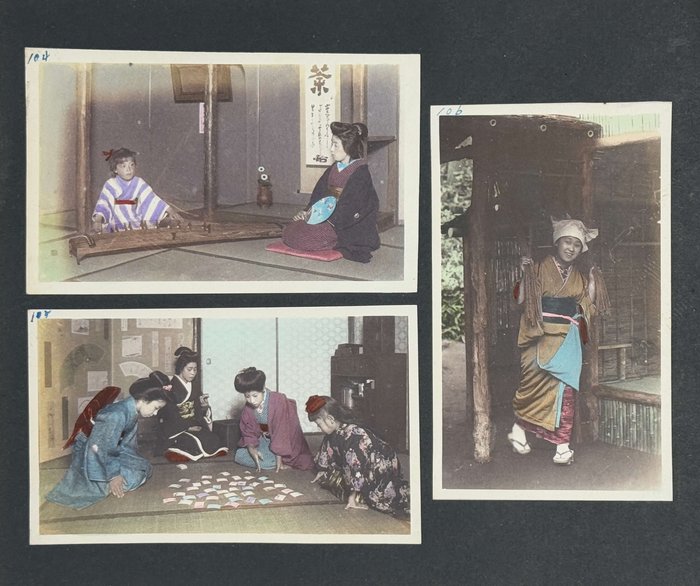
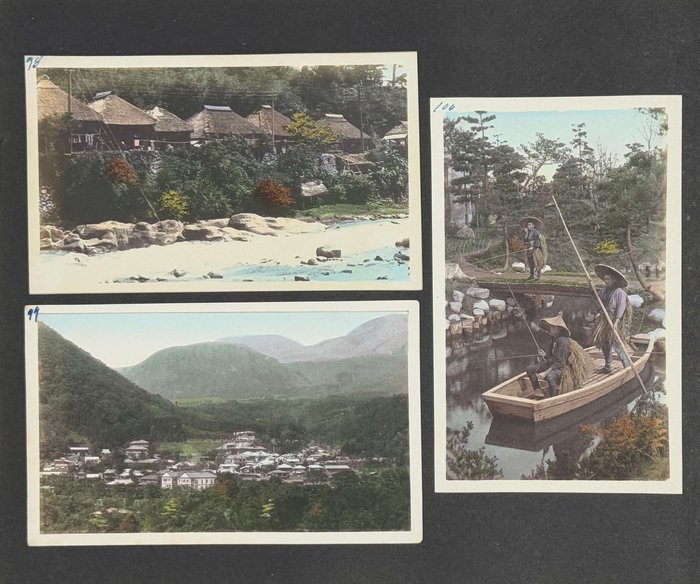
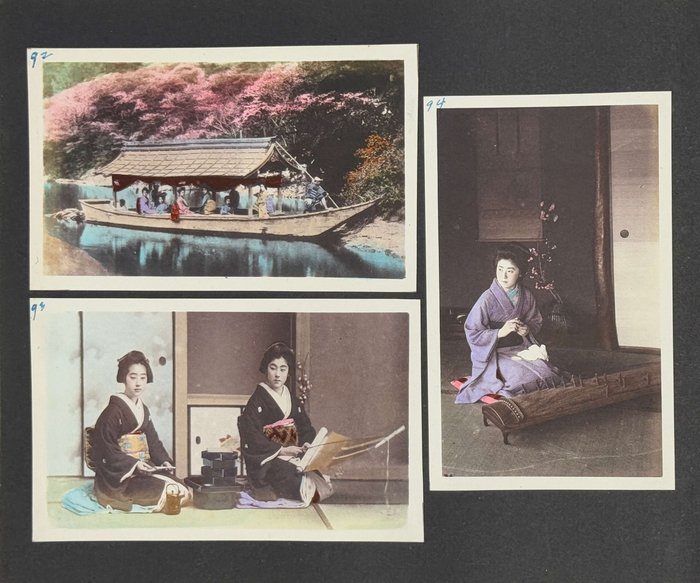
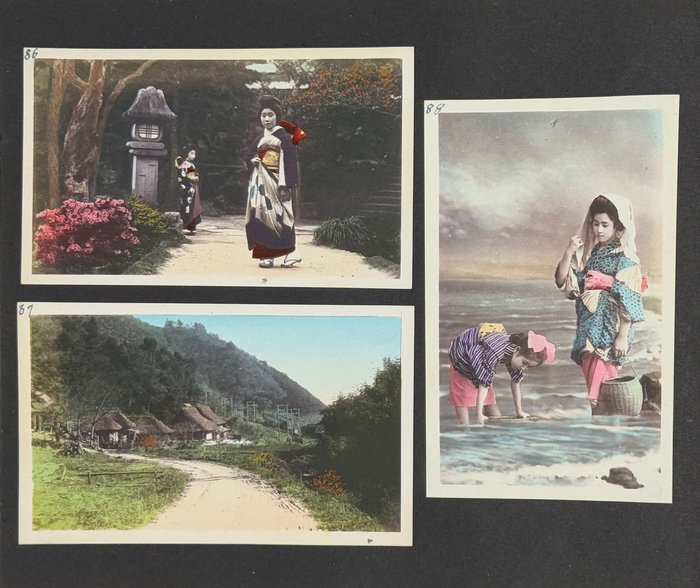

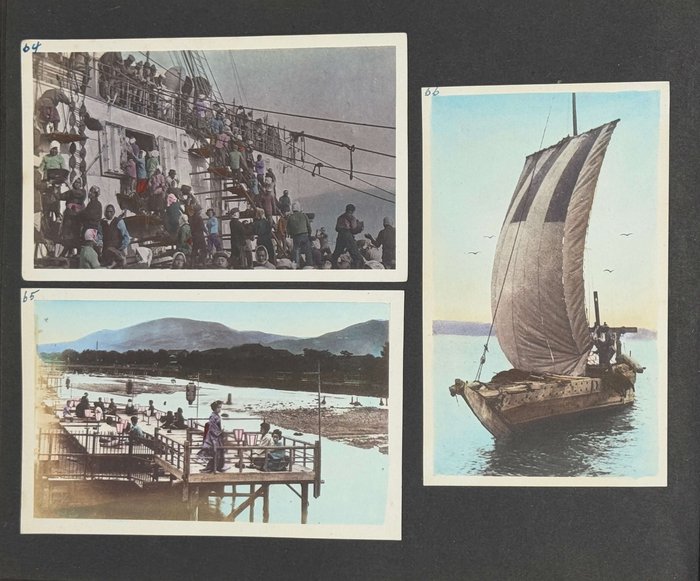
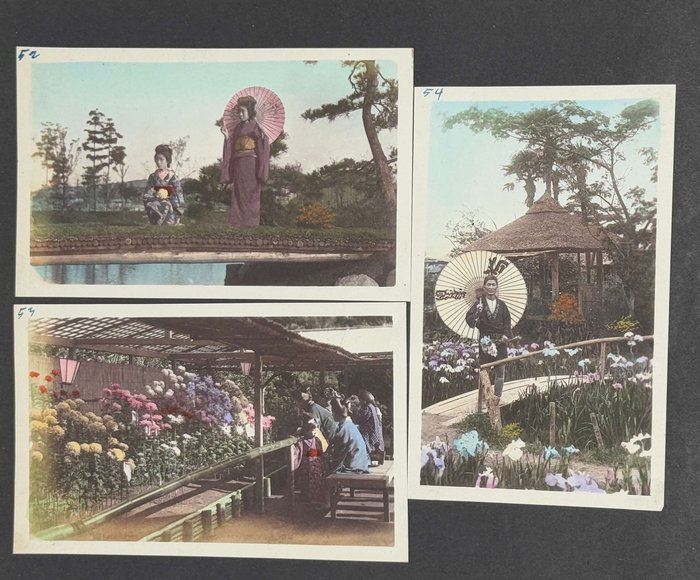
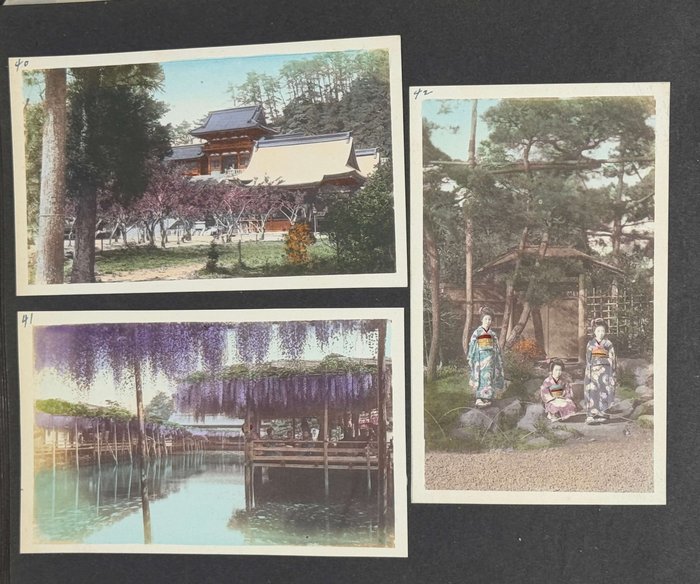
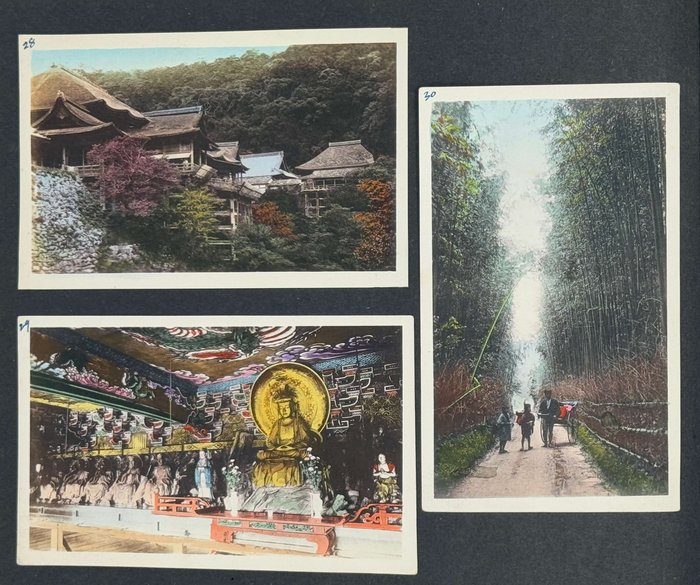
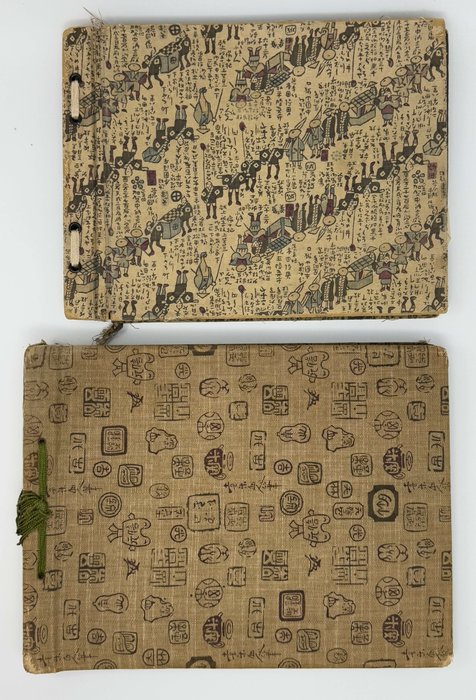
#PD90
Ca. 1919-1920
Album 1. Oblong Quarto (30.5 x 23 cm or 12 x 9 in). 25 black cardstock leaves (two blank). 248 mounted gelatin silver photographs from ca. 11 x 8.5 cm (4 ¼ x 3 ¼ in) to 6 x 3.5 cm (2 ¼ x 1 ½ in). Over 140 images with period ink captions on mounts, two with period typewritten captions on images. Two mounted real photo postcards ca. 14.5 x 9 cm (5 ½ x 3 ½ in). Period patterned cloth album fastened with string. Mild rubbing on corners of covers; mounts slightly waved; one image creased, a couple of photos mildly faded or with silver mirroring, but overall a very good album of strong interesting photos.
Album 2. Oblong Quarto (28 x 21.5 cm or 11 x 8 ½ in). 24 black cardstock leaves. 142 mounted hand-coloured real photo postcards ca. 13.5 x 8 cm (5 ¼ x 3 ¼ in). 76 postcards with period pencil captions on four sheets of paper ca. 22 x 14.5 cm (8 ½ x 5 ¾ in) loosely inserted. Period illustration patterned cloth boards fastened with string. Boards slightly loose and rubbed on extremities, mild staining on front board; one postcard with minor stains, but overall a very good album of strong interesting photos.
A lively collection of original gelatin silver photographs and postcards showing Japan, in and around Tokyo. Both albums were likely compiled by an American family during their residence in Japan from 1919 to 1920.
Over 190 photographs are of Japan, showing the Tokyo, Kanegawa, Nagano, and Shizuoka prefectures. Several photos show Ōmori (part of current-day Ōta City, Tokyo): Ōmori Station, street views, and snapshot portraits of locals, including a man transporting goods with a carrying pole, young girls in kimono, and crowds of schoolboys. Also of Tokyo are photographs of Ueno Park, portraits taken in the streets of Tsukiji (Chūō, Tokyo), interiors of a Western-style residence (likely the compiler’s), and additional street scenes. Other photographs show locations in nearby prefectures. These include the hot springs of Hakone in Kanegawa; a series of photographs showing a trip up Mt. Asama and the nearby resort town of Karuizawa, with snapshots of the locals and storefronts with English signage, in Nagano; and Gotemba, showing men on horseback with their guides and the exterior of a teahouse, in Shizuoka. A series of photographs depicts an organized trip through the countryside: one photo shows a procession of people walking and horse-drawn carriages, other photos show the guides and participants posing in traditional-style straw hats and with large sticks. Several uncaptioned photographs are street views of urban Japan, likely Tokyo, showing snapshots of locals and storefronts—one reads “Restaurant Seiyoken.” Two real photo postcards show the Great Buddha of Kamakura and a view of Mt. Fuji.
The second album contains 142 postcards, printed and hand-coloured. They show views of Mt. Fuji; Nikko, Tochigi; cherry blossoms in bloom in Ueno Park and Koganei, Tokyo; and shrines and temples, including Kasuga-taisha (Kasuga Grand Temple, Nara), Sensō-ji (Asakusa Kannon Temple, Tokyo), Tsurugaoka Hachimangū Shrine (Kamakura), the interior of Sanjūsangen-dō (Kyoto), and Itsukushima Shrine (Miyajima, Hiroshima). They also include rural scenes, showing daily labour like farming, fishing, and using an usu (large stamp mill). There are also portraits of geisha playing koto, making tea, or otherwise posed.
Other photographs in the collection show the Japanese steamer Fushimi Maru, likely en route to Japan from Seattle or Vancouver; portraits taken in Seattle and a day trip to Alki Beach; and snapshots from Illinois, including Lincoln Park, Chicago, and the countryside.
Overall, an interesting and lively collection of photographs and postcards showing Japan in the late 1910s.

